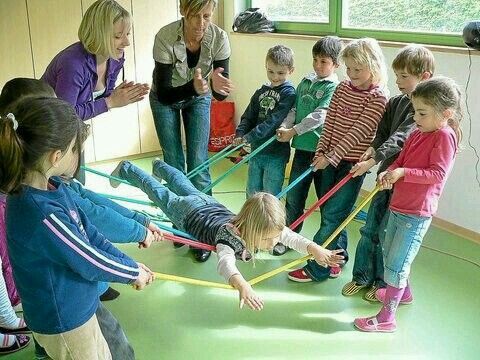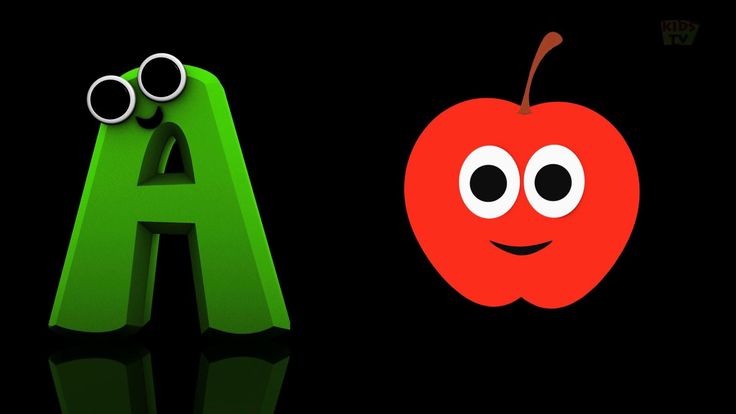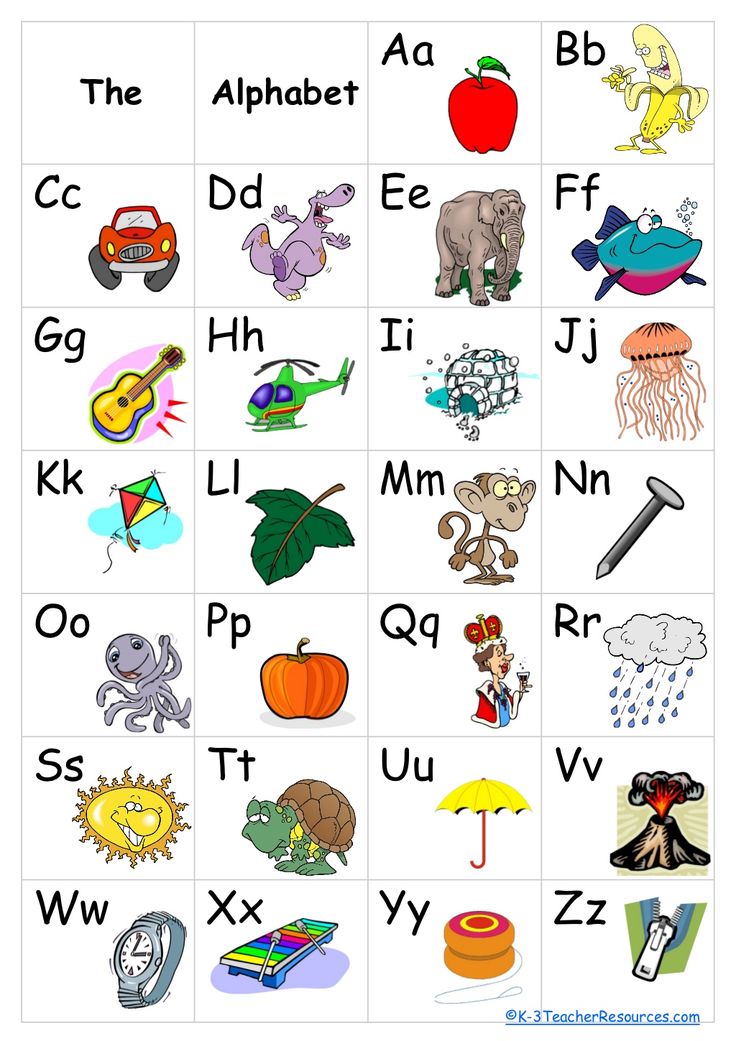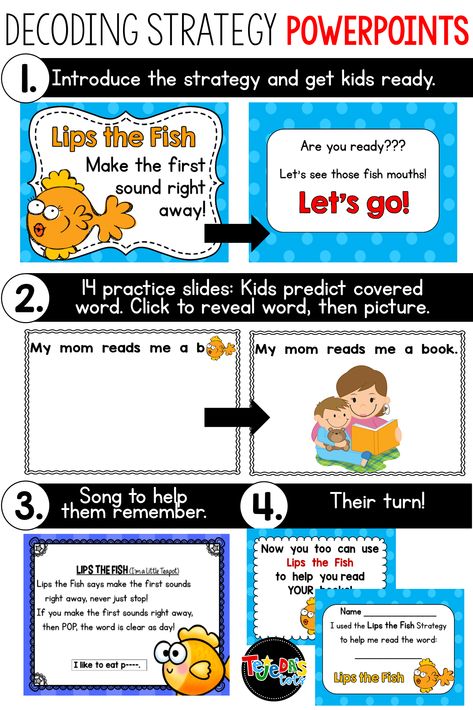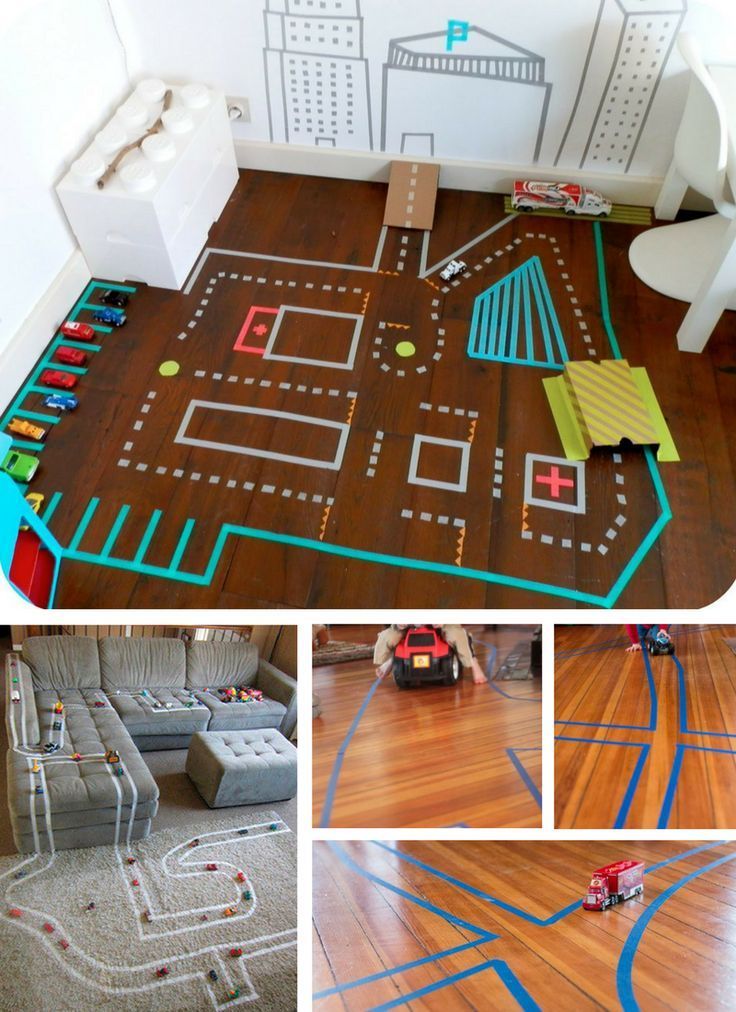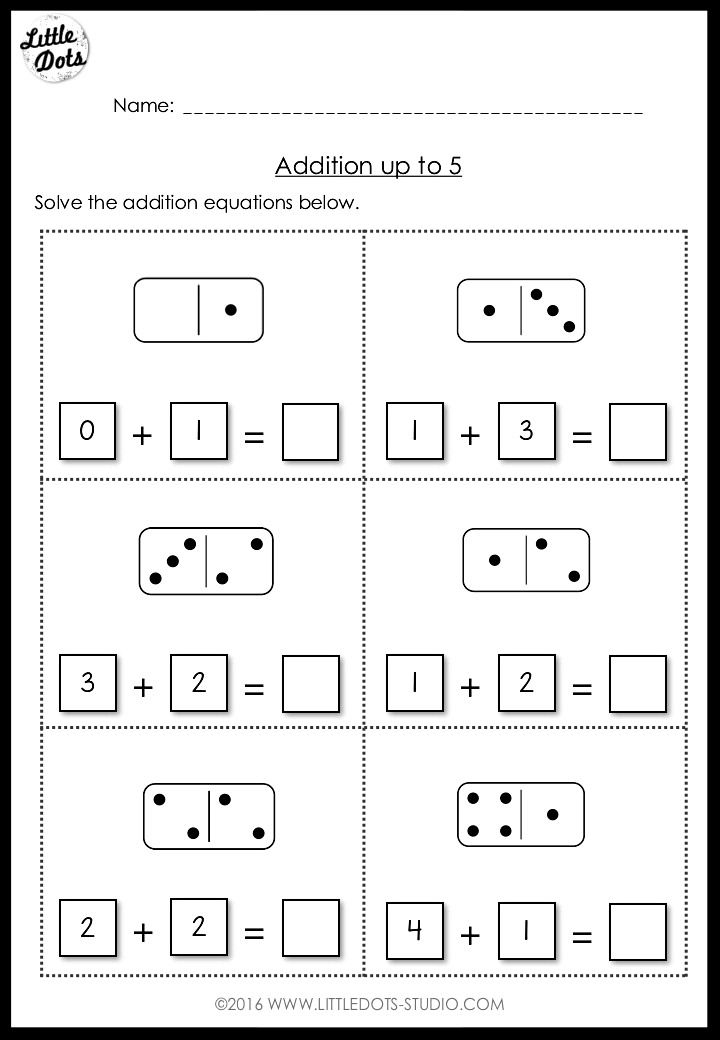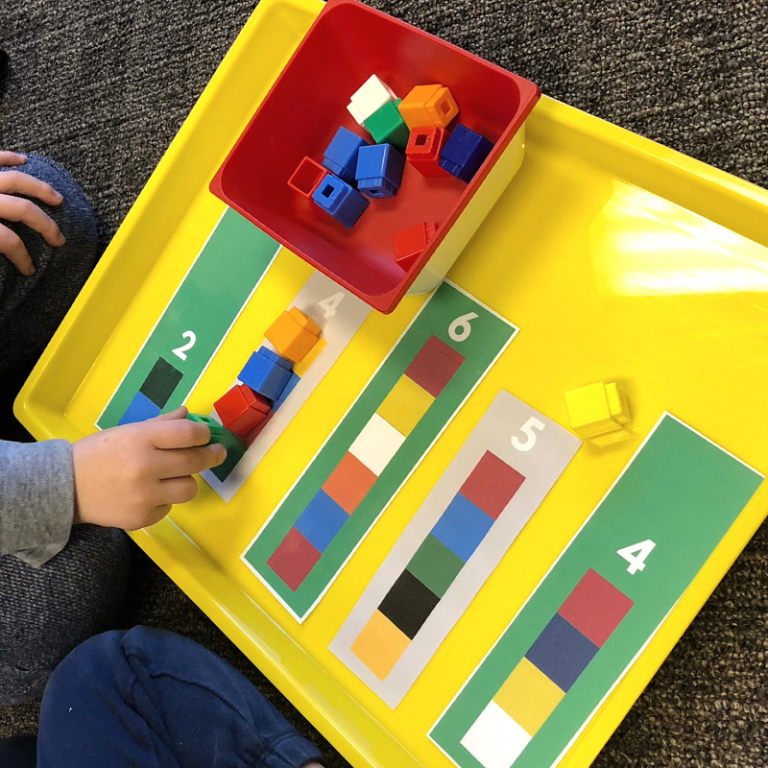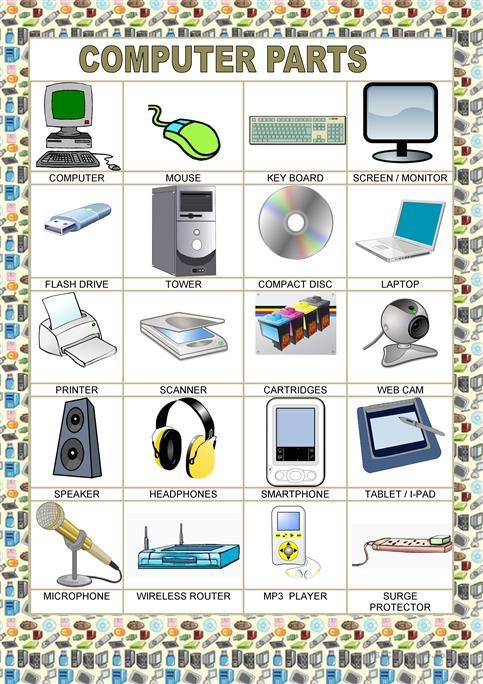Cooperative kindergarten games
41 Fun Cooperative Games for Kids
Disclosure: This post may contain affiliate links, meaning I get a commission if you decide to purchase through my links, at no cost to you. As an Amazon Associate, I earn from qualifying purchases. Read the full disclosure here.
Cooperative Games for KidsEveryone likes to win at games, especially young children who might have not yet learned to take minor losses in stride. Of course, when it comes to most games, victory and defeat are twin sides of the same coin, which can create thorny situations for teachers and parents. Fortunately, there’s an increasing number of easy and diverting solutions to this conundrum: cooperative games.
In these games, the players work together as a group to achieve a common goal, rather than playing against each other. While victory is still not guaranteed, a cooperative game will ensure that each participant can have a great time from beginning to end. As a bonus, it’s never too early to teach children about the importance of teamwork, and games provide a fun backdrop to the lesson. Some of these games can even double as trust-building activities for adults in the workplace. In addition, participation in these games may even help antisocial or aggressive children become more calm and relaxed in a school setting.
To help you get started, here’s a list of popular cooperative games that are both fun and simple to learn. All of them are suitable for grade-school aged children (some younger than others).
Cooperative Games for PE
1. Smaug’s Jewels
This game (based on J.R.R. Tolkien’s The Hobbit) invites players to steal the “dragon’s” jewels and make it back to their base without being captured.First, use cones or other stationary markers to create a circle, and place one player at each marker. Place a Nerf football (or any soft object) in the center of the circle. Choose one player to serve as “Smaug” (the dragon), and assign a number to each remaining player to divide them into teams (1, 2, or 3).
Choose one player to serve as “Smaug” (the dragon), and assign a number to each remaining player to divide them into teams (1, 2, or 3).
To begin play, call a team’s number. This team will have to work together in an attempt to take “Smaug’s Jewel” and return safely to their base. If Smaug manages to tag any of the players before they get back to their base, that team’s turn ends. When a team manages to steal the jewel, it’s time to select a different player to act as Smaug.
2. Iceberg
If you’re looking for cooperative games for PE for students in the lower grades (K-2), this is a suitable option.First, split students into teams of 4 (or 6, depending on the size of the class and the number of playing surfaces you have on hand). Give each team a playing surface (old sheets and tablecloths are preferred). Have each team lay out their playing surface on the floor.
When you’re ready to begin play, blow a whistle or clap your hands to alert all players to stand on their team’s playing surface.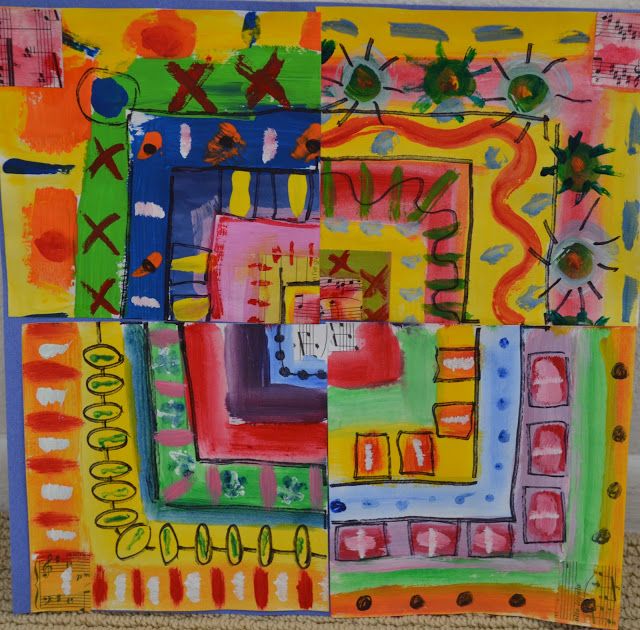 The area beyond the boundaries of the sheet are off-limits. Once every player is on the sheet, have them move off and fold the sheet in half, repeating this process until the sheet is too small for the entire team to stand on.
The area beyond the boundaries of the sheet are off-limits. Once every player is on the sheet, have them move off and fold the sheet in half, repeating this process until the sheet is too small for the entire team to stand on.
3. Space Race
The objective of this game is to collect enough “fuel sources” (bean bags) and return them to the “tanks” (small hoops or poly spots) without touching the area outside the “spaceships” (hula hoops).Divide players up into teams of four to six, depending on group size. Scatter a total of five bean bags for each team across the playing surface. Assign each team a “home base” with five fuel tanks apiece.
Players can begin in either the center of the playing surface, or at their team’s home base. To move across the playing surface, players must formulate a path using the hula hoops (three per team works well), gathering all team members within these safe spaces. A hoop can be moved only when there are no players currently inside it.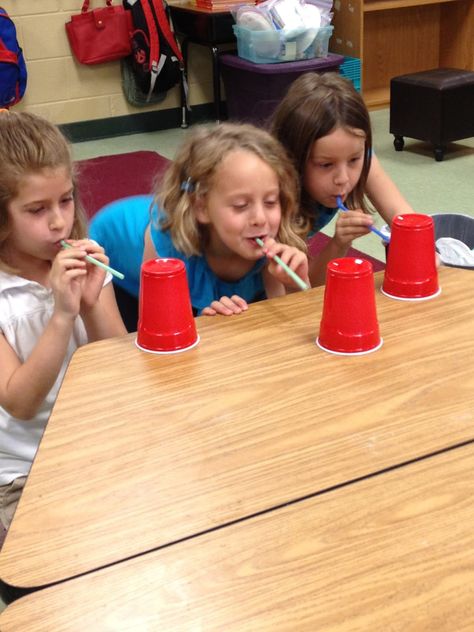
Once the fuel sources have been collected, they must be placed on the tanks. Tossing the bean bags is not allowed—the players must physically return to their home base.
4. Caterpillar
Note that players should be comfortable doing a forward roll before attempting this activity.If you like, divide players into two teams (it’s fine to keep them in a single line instead). Line up each team, single file, and have each player pass their right hand through their own legs before reaching out their left hands to take the right hand of the person in front of them. The player in front will still have a free left hand, while the rear player has a free right hand.
Once this is done, have the first player perform a forward roll, without relinquishing the next player’s hand. Once this player has completed his or her roll, have them sit cross-legged as the line works together to move forward. Each subsequent player will repeat the forward roll, also sitting cross-legged when finished.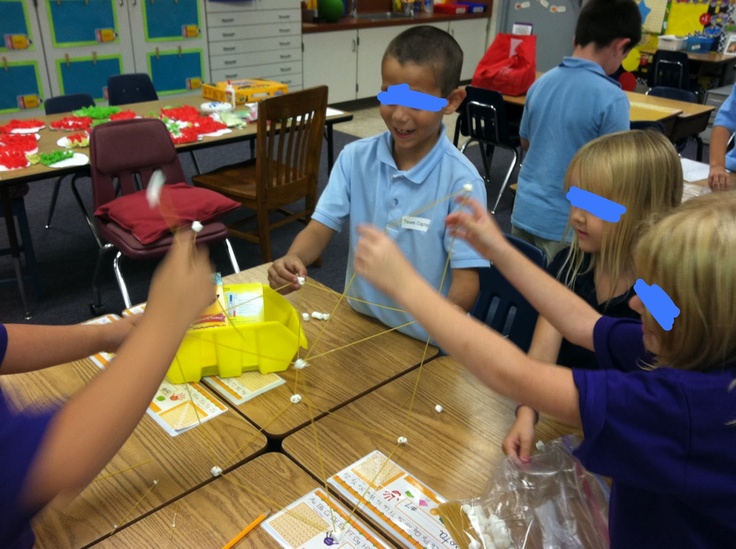 The goal is to move through the entire line without breaking the chain.
The goal is to move through the entire line without breaking the chain.
5. Rope Circle
Divide players into groups of two. Have one partner tie a jump rope loosely around their own wrists (one end on the right wrist, one on the left). Next, have the second partner tie a second jump rope around their own left wrist, then thread the other end of rope through their partner’s “circle.” Finally, the free end should be tied to the second player’s right wrist. The players should then attempt to separate from one another without untying the ropes or freeing themselves from their own circles. It’s up to the supervisor to make sure that the ropes aren’t being tied too tightly.
6. Ball Builders
Divide players into groups of two or three. Assign one player on each team to be the holder, and the rest to be the builders. The objective is to see how many tennis balls the holder can hold on to at one time, without using their pockets or any other article of clothing.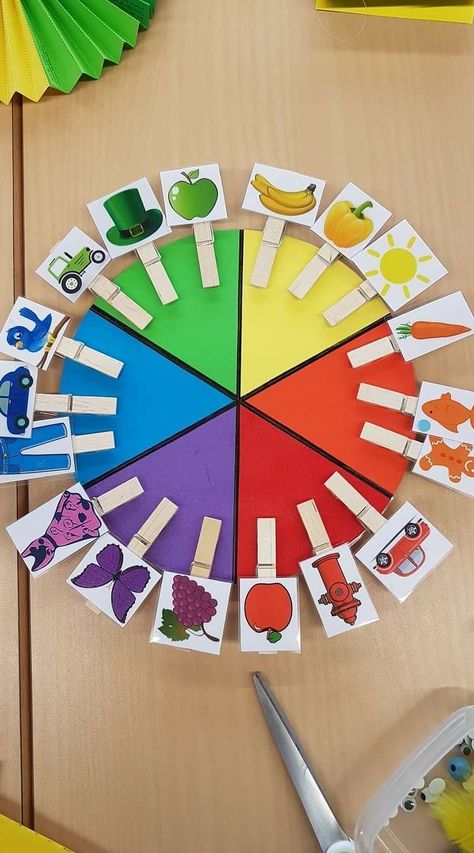 Additionally, the balls cannot be touching anything aside from each other and the holder, and must be held for at least 10 seconds. Players are welcome to switch roles after a few attempts.
Additionally, the balls cannot be touching anything aside from each other and the holder, and must be held for at least 10 seconds. Players are welcome to switch roles after a few attempts.
7. Crossing the River
This game can be played with groups of two to five participants, depending on age group. The smaller the group, the more challenging the game becomes.The objective is to move your entire group across the “river,” or playing surface (this can be as wide as you like, but 20-30 feet is standard). To do this, players should line up beside each other, their feet touching their closest neighbors’. In order to cross, they must move as a group without breaking this contact. If a player’s feet loses contact with any other player’s, the entire team has to return to the starting line.
8. Shipwrecked
Divide players into teams of eight to 10 students apiece, and assign a large hoop to each team. This hoop will act as their “spaceship.” Blow a whistle to signify the beginning of play, at which time the players will begin racing with their ship toward the finish line.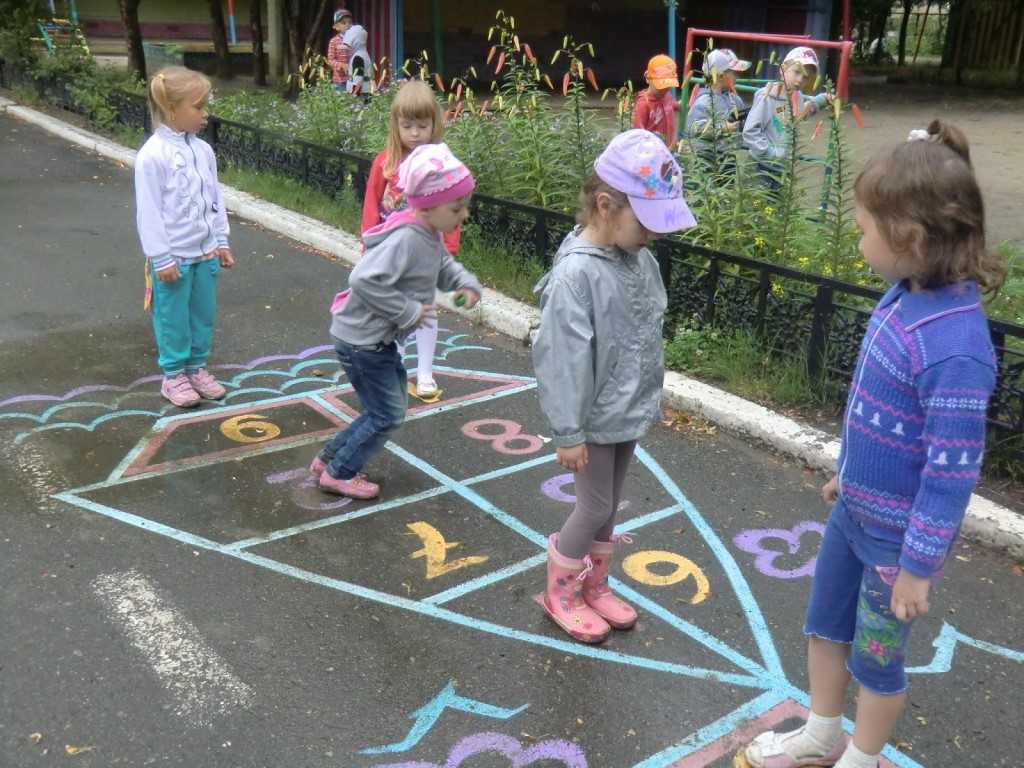 Note that all team members must be touching the ship at all times during this portion of play.When you call out “Shipwrecked,” the players all must set their ship down and attempt to get within the circle. The first team to get every player on board earns one point, and the first team to cross the finish line earns two points. The team with the most points is the winner of that particular “voyage.”
Note that all team members must be touching the ship at all times during this portion of play.When you call out “Shipwrecked,” the players all must set their ship down and attempt to get within the circle. The first team to get every player on board earns one point, and the first team to cross the finish line earns two points. The team with the most points is the winner of that particular “voyage.”
9. Knots
To play this game, divide players into teams of six, and have each team form a circle. Instruct players to hold hands with two others (they can’t hold both hands of the same player), making sure that no one’s hands are joined with their closest neighbors’.Once this is done, blow a whistle to signal that it’s time for the “knot” to begin unraveling. All hands must remain joined until the team is standing in a circle, or in two intertwined circles.
10. Frenzy
This is a fun way for students to let out pent-up energy on a rainy day. Invite players to scatter across the playing area (the gymnasium is the preferred venue). Next, toss out as many balls (or balloons) as there are players. The participants will then attempt to keep the balls (known here as “rabid nuggets”) in constant movement.
Invite players to scatter across the playing area (the gymnasium is the preferred venue). Next, toss out as many balls (or balloons) as there are players. The participants will then attempt to keep the balls (known here as “rabid nuggets”) in constant movement.
Instructors should stand at either end of the gym to keep an eye out for “hectics,” or balls that stop moving. Once you’ve spotted one, yell out “HECTIC!” and point to the offending object. Players are then given a set period of time (say, five seconds) to get the hectic moving again.
Once five hectics have been spotted, the “frenzy” is over. Time each frenzy to see how long the players are able to make one last. To keep things more interesting, toss another rabid nugget into the fray every 10 seconds or so.
11. Group Juggle
Even students who aren’t skilled at juggling on their own can be successful at this cooperative activity.To begin, split the class into teams of at least 5 (try to stick with odd-numbered teams).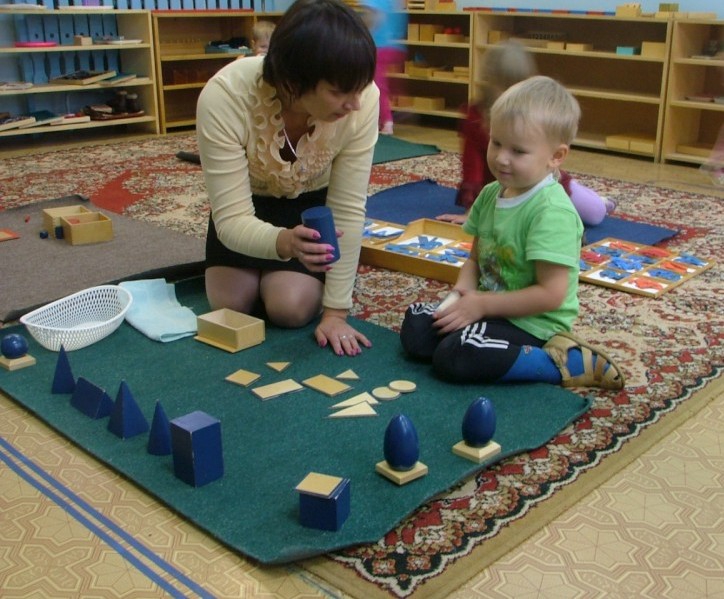 Have all players form a circle, facing one another. One player should then be given a ball, which he will throw to any team member who isn’t standing directly to his right or left. The next player repeats this step, and so on and so forth, until the ball returns to the starting player. Once this happens, have the players attempt to pass the ball in the same sequence as before. Once a rhythm has been established, continue by adding more balls to the circle.
Have all players form a circle, facing one another. One player should then be given a ball, which he will throw to any team member who isn’t standing directly to his right or left. The next player repeats this step, and so on and so forth, until the ball returns to the starting player. Once this happens, have the players attempt to pass the ball in the same sequence as before. Once a rhythm has been established, continue by adding more balls to the circle.
12. Birds of a Feather
In advance, make up a series of index cards printed with the names of various animals (two for each animal you choose). Be sure that each creature has a distinctive sound that children will likely be familiar with.To play, have each student draw a card from the pile. Turn them loose in a safe playing field, encouraging them to keep their eyes closed during play. Have them imitate their designated animal, repeating the sounds until they locate the student who shares the same animal. Once this happens, the pair is welcome to open their eyes.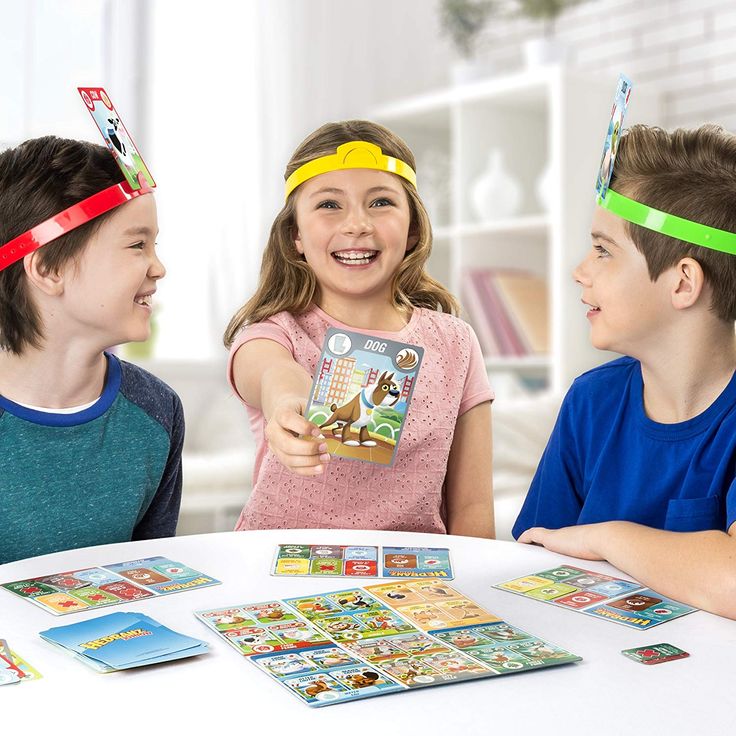 The game is over when all of the pairs have been matched up.
The game is over when all of the pairs have been matched up.
13. Amoeba Advance
This game requires splitting the class up into two equal teams. Once you’ve done that, invite half the team to form a circle by joining their elbows, and have the rest of the team wedge themselves inside the circle.When both teams have formed their makeshift amoebas, blow a whistle to signify the start of play. The teams will then attempt to make it to the finish line without breaking up the group. If the amoeba should dissolve during the attempt, the team must repair itself before it can move forward.
14. Magnificent Marbles
In advance, designate a large circle to serve as the giant marble ring. Place three or four partially deflated beach balls and an equal number of smaller targets (like multicolored poly spots) within the playing circle.To begin play, have ready a supply of bean bags. Invite participants to stand outside the circle and use the bean bags to nudge the balls as close to the smaller target areas as possible.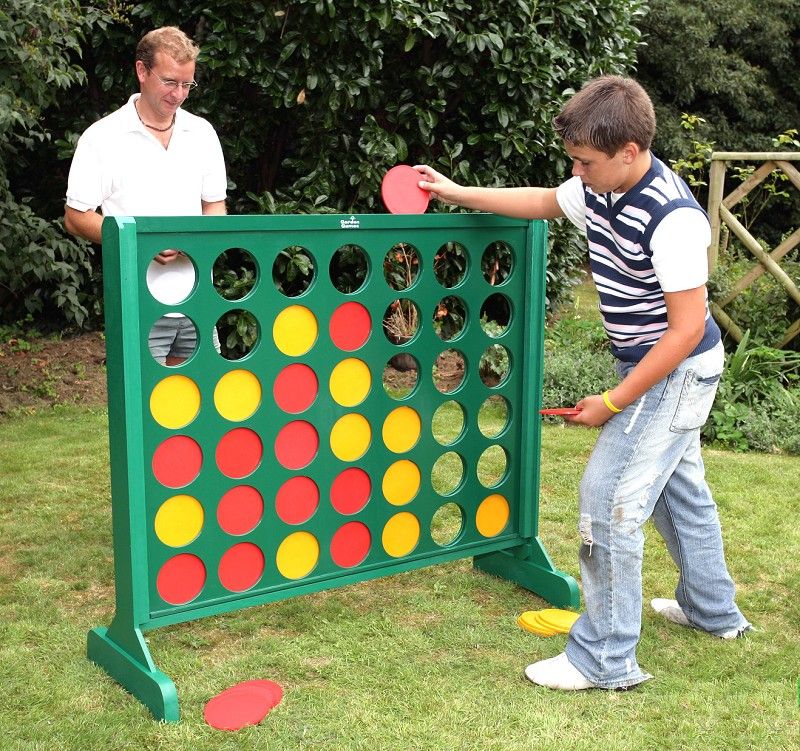 Players are not permitted inside the playing circle; if a bean bag gets stuck inside, they may attempt to retrieve it only by throwing another bean bag in to try and knock it out.
Players are not permitted inside the playing circle; if a bean bag gets stuck inside, they may attempt to retrieve it only by throwing another bean bag in to try and knock it out.
15. Dry Marco Polo
This activity is a good one to use as an icebreaker on the first day of gym class. It bears a resemblance to Birds of a Feather, only students are given a larger role in the setup.Divide students into pairs. Each group must then choose either a compound word or a group of words that work together in some way (i.e., “suit” and “case” or “cheese” and “whiz”). The relationship between the two words doesn’t really matter, as long as both partners agree on which ones to use. One player should be assigned one word, with their partner taking on the other.
Invite each team to share their chosen words with the rest of the class. Not only does this provide the group with a fun sharing activity, it will help to ensure that each word pairing is unique.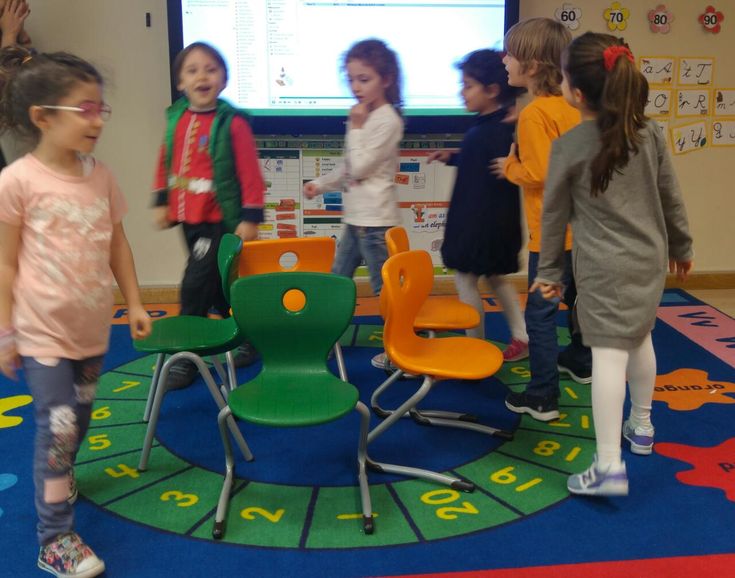
Next, have the students scatter to various areas within a safe playing field. Ask them to close their eyes (or use blindfolds if necessary). Blow a whistle to signify the start of play, at which time the players should begin calling out their assigned words. Once the partners have found one another, they’re invited to open their eyes (or remove their blindfolds) and watch the rest of the group.
Cooperative Board Games for Kids
16. Mmm!
The object of this game, in which the players are represented by a group of mice, is to “finish” all the food in the pantry before the hungry cat breaks up the party. There are three six-sided dice, all printed with five different types of food and one X; and a playing surface, featuring the same food images and, of course, the cat.
On a single player’s turn, he or she will roll all three dice. If all three are X’s, the cat moves one step closer to the pantry, and the player’s turn is over. If the dice turn up any food images, the player must place at least one die on the corresponding food square located on the board.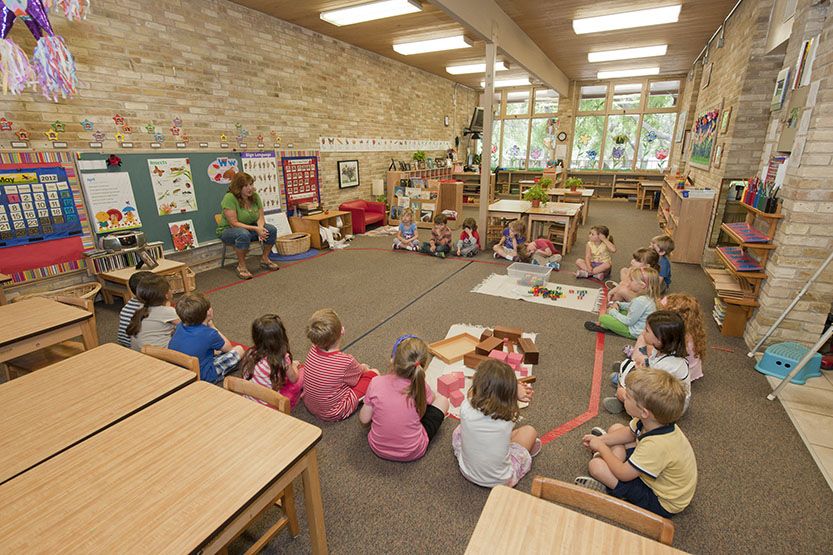 They may then choose to re-roll the remaining dice in an attempt to “finish” the chosen food. If they are unable to do so on their subsequent roll, the player’s turn ends with the cat moving one step closer. The player is permitted to go on rolling the dice for as long as he or she is able to place at least one die on the board.
They may then choose to re-roll the remaining dice in an attempt to “finish” the chosen food. If they are unable to do so on their subsequent roll, the player’s turn ends with the cat moving one step closer. The player is permitted to go on rolling the dice for as long as he or she is able to place at least one die on the board.
If the cat reaches the pantry while there’s still unfinished food on the board, the game has been lost. If, however, the team manages to finish all the food, then they’ve won. The reverse side of the playing surface offers a more challenging version of the same principle.
17. Stack Up!
As cooperative board games go, this one is as simple as it gets. During play, players take turns spinning a color-coded dial and stacking blocks of the corresponding color. The objective is to stack twelve blocks without landing on the “Stack Smasher” when the dial is spun.The dial also contains challenges to make the game more interesting—for example, players might have to stack while singing “Happy Birthday. ” There are three levels of difficulty, so if the game becomes too dull for young players, they’re welcome to ramp it up.
” There are three levels of difficulty, so if the game becomes too dull for young players, they’re welcome to ramp it up.
18. Race to the Treasure
Like Candy Land, Race to the Treasure requires no reading, and the rules are easy enough for toddlers to follow. Players take turns drawing tiles from a sack, indicating either a section of a path or a picture of the dreaded Ogre who guards the treasure.The objective is to make a path to the three keys that will unlock the treasure, before forging a path to the final goal: the treasure itself. Meanwhile, each Ogre tile will move him closer to the prize. If he gets there first, the team loses. If they reach the treasure before the Ogre does, they win.
19. Hoot Owl Hoot!
The concept between Hoot Owl Hoot! is that it’s nighttime, and all the owls are out on the hunt. The objective is to get them all safely back to the nest before sunrise.To begin, a token representing the sun is placed on its corresponding track, while three owls are placed on a track of their own. Each player then receives three cards, which will be placed face up in front of them.
Each player then receives three cards, which will be placed face up in front of them.
The deck includes 50 cards, 36 of which represent colors, and 14 of which represent the sun. When a player receives a sun card, they must use it to move the sun token forward one space on the board, after which they discard the sun card. If a player has all color cards on their turn, they must discard one and move one of the owls to the first available open space in the corresponding color. If one of the owls surpasses another owl on the board, the players all make a hooting sound to cheer it on. If all of the owls have made it back to the nest before the sun completes its track, then the team wins!
To make the game more challenging, add more owls to the board at the start of play (the game includes six owls total).
20. Pandemic
The concept behind this popular game is compelling, if somewhat frightening to children under the age of eight: Your team is tasked with fighting a series of dangerous viruses that are spreading across the world.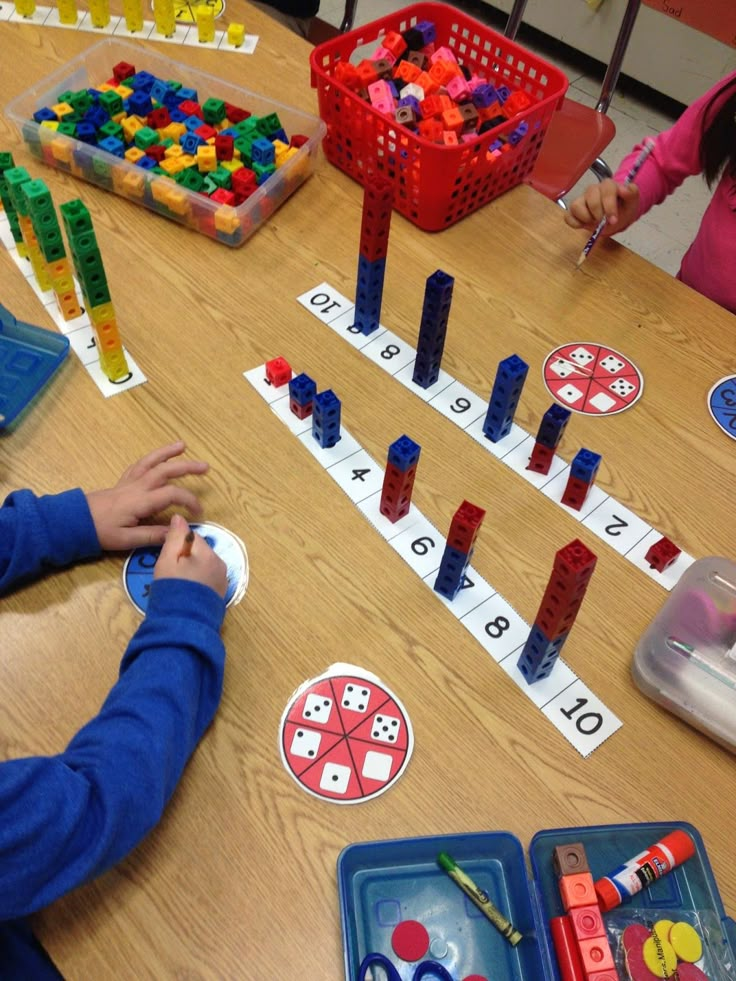 Players must travel to different areas of the globe to offer treatment to those infected, and also to build research stations in the attempt to find cures for the various diseases. Two decks of cards (one benign, one “Epidemic!”) control the courses of the viruses, and participants must work together to coordinate a successful plan.
Players must travel to different areas of the globe to offer treatment to those infected, and also to build research stations in the attempt to find cures for the various diseases. Two decks of cards (one benign, one “Epidemic!”) control the courses of the viruses, and participants must work together to coordinate a successful plan.
21. Feed the Woozle
Instead of working against a common enemy, participants in this lighthearted adventure are trying to keep the mythical “Woozle” fed so he won’t go hungry.Players are invited to feed the Woozle the number of snacks that appears on the die during their turn. To make play more challenging, they’re also tasked with making sure the snacks remain on the spoon during transfer (he won’t eat them otherwise, and they won’t count towards the total). Once he’s been fed, the player takes a “yummy card” from the stack to indicate how many treats he’s gotten so far.
The next player then repeats the process, until all the snacks are gone.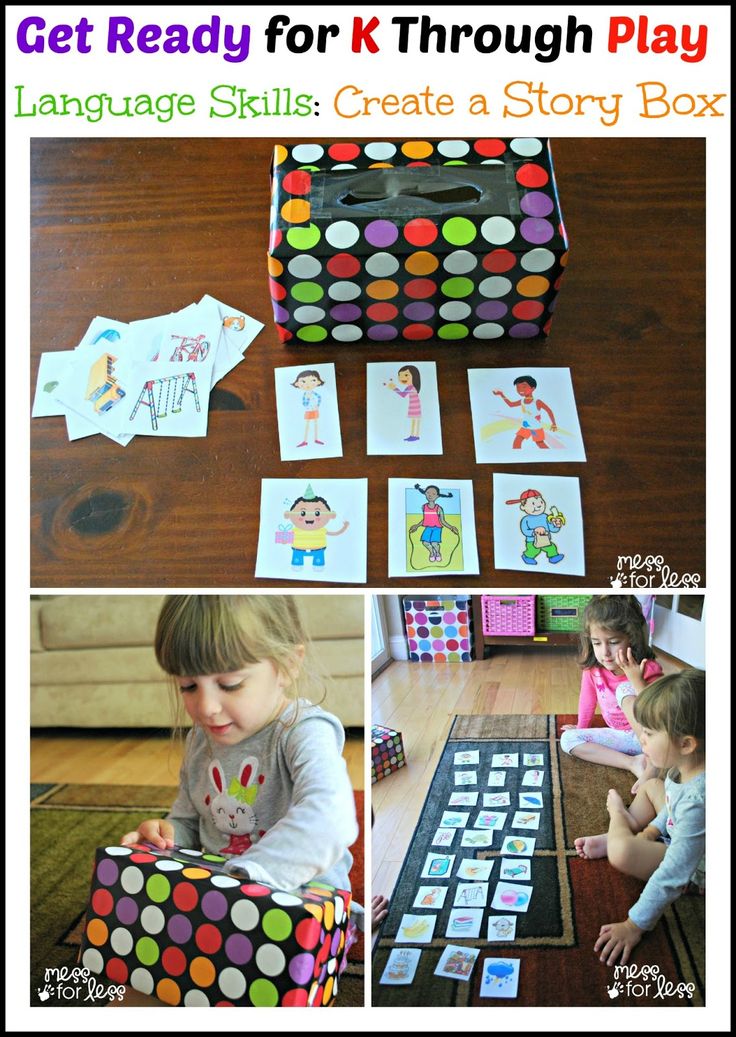 If the Woozle has gotten 12, then the team wins; if not, the beast remains hungry until the next round of play.
If the Woozle has gotten 12, then the team wins; if not, the beast remains hungry until the next round of play.
22. Ghost Fightin’ Treasure Hunters
This game is similar to Race to the Treasure!, but the setup is slightly different. Participants join forces in an attempt to recover treasure from a haunted house before the place becomes overrun by ghouls. Along the way, they have to evade these same ghouls through a combination of wit, teamwork, and skill.
23. Flashpoint Fire Rescue
In Flashpoint Fire Rescue, players are trying to save a city from the threat of a spreading fire. The team is outfitted with basic equipment, and tasked with rescuing a number of civilians from the burning buildings. As the fire spreads, pathways to the victims may become blocked, making the task that much more difficult.There are two skill levels for Flashpoint Fire Rescue: basic and advanced. When playing with very young children, you might want to tone down the intensity of the threat, even though it’s make-believe to begin with.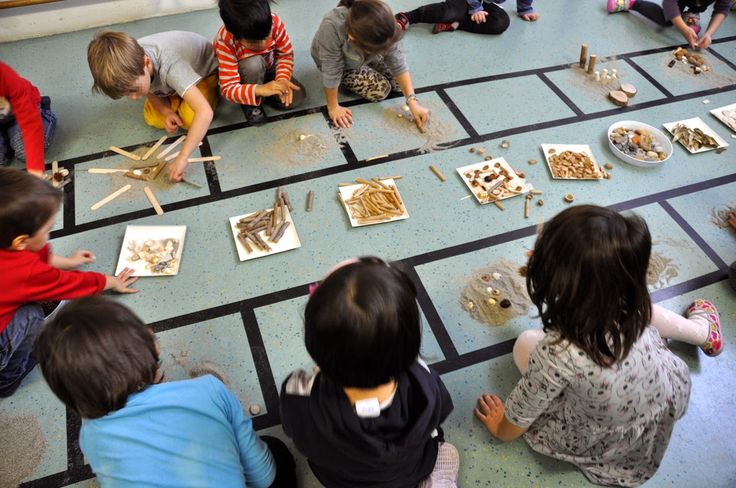 For example, if you fail to save the building, you can explain that a rival team managed to save the people inside instead.
For example, if you fail to save the building, you can explain that a rival team managed to save the people inside instead.
24. Harvest Time
This one is geared toward very young children—even preschoolers can get in on the fun. The playing surface is a basic board, depicting a farmhouse surrounded by acres of crops, along with various homegrown vegetables The object is to gather the entire harvest before winter sets in and destroys the crops. Families who live in rural areas may appreciate this one the most, as it teaches valuable life skills that are bound to come in handy later.
25. Granny’s House
Another game aimed at the preschool set, this one inviting the tykes to set out on an adventure to Granny’s House while encountering a number of troublesome obstacles along the way.The board is reminiscent of old favorites like Candy Land and Chutes and Ladders, with its depictions of varicolored symbols that make up the path to the titular destination. Play is picture-based, so reading comprehension isn’t a necessary prerequisite.
Play is picture-based, so reading comprehension isn’t a necessary prerequisite.
26. Stone Soup
This cheerily designed game is similar to Memory in nature, as players have to locate matching cards in order to add a variety of ingredients to the soup pot. Unlike the traditional rules of Memory, however, the players aren’t trying to amass the greatest number of pairs, but to keep the soup cooking for as long as the fire keeps burning. If the designated number of ingredients hasn’t been added by the time the fire goes out under the kettle, the game is over and the family goes hungry.
27. Mermaid Island
In this fantastical, nautical outing, players try to get the mermaids back to their home base before the evil Sea Witch can swoop in to destroy them. Oftentimes, a single move might endanger the others, so participants must remain aware if they want to get the whole group (fleet?) home safely. Obviously, this is an appealing option for the girls in the group, but there’s no reason why boys shouldn’t enjoy it too.
28. The Secret Door
Sleuths-in-training will want to play this game again and again, as participants attempt to locate a number of valuable objects within a deserted mansion. To do this, they’ll take turns flipping cards from a deck to look for two that match—but if they turn over twelve clock cards before they locate all the treasures, the game is over. Should they find all of the hidden objects, they’re then invited to figure out which three cards were hidden from the deck at the start of play.
29. Lion In My Way
In addition to providing youngsters with a cooperative activity, Lion In My Way often inspires creative storytelling as well. The object is to get from one end of the board to the other, all while encountering the likes of hungry lions, barren deserts, and a number of other increasingly peculiar obstacles. A set of tool cards aids players in their efforts to defeat these roadblocks.
30.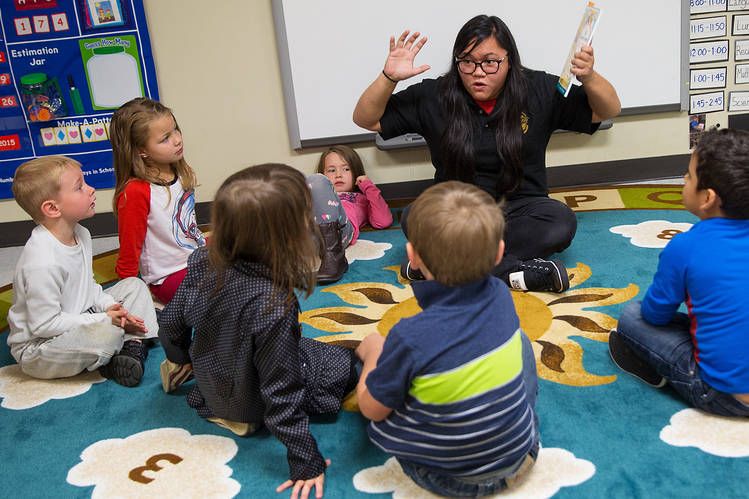 Outfoxed!
Outfoxed!
This foxy outing serves as a good forerunner to Clue, or any other detective-themed game. The story goes that a mysterious thief has made off with Mrs. Plumpert’s pie. Players must follow clues to determine which of the sly foxes is the culprit before he can make it safely to the other side of the board.To play, participants may choose whether to either search for clues or reveal possible suspects on their respective turns. Should the player be unsuccessful in turning up their desired action when they roll the dice, the fox moves ahead three spaces on the board. If they succeed in winning the opportunity to take action, they’ll either use the suspect cards to gather new information, or move their own playing piece across the board to search for clues. As play progresses, the players will be able to narrow down the list of suspects, based on the information they’ve gathered.
If the fox token makes it all the way to the end of the board and the players haven’t named a suspect, the game is over and the detectives lose.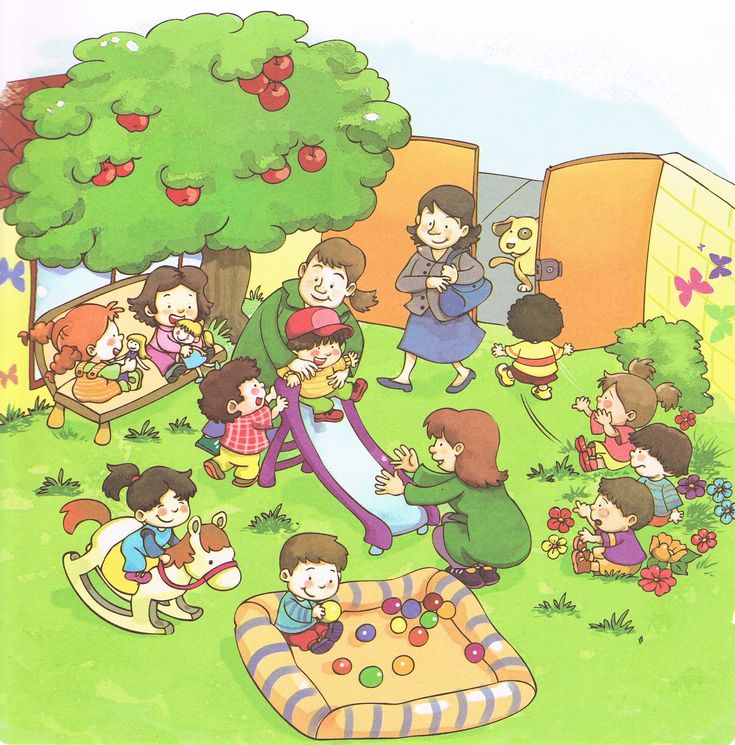 Likewise if the players accuse a suspect who turns out to be innocent. However, if the correct culprit is named, the detectives win.
Likewise if the players accuse a suspect who turns out to be innocent. However, if the correct culprit is named, the detectives win.
For more information on the rules of Outfoxed! and other board games like it, check out the Board Game Geek website.
Cooperative Games for the Classroom
31. Balloon Bop
Remember playing a game of catch and trying to see how many passes you could make without allowing the ball to hit the ground? This game has a similar objective, but it utilizes a balloon (or multiple balloons) and a larger group of people.
To begin the teacher should invite children to form a loose circle by holding hands. Continue by dropping a balloon (not helium-filled) into the middle of the circle, and ask students to count how many times they can “bop” it back into the air without breaking the circle. To do this, the students may use any part of their body except for their feet (knees are acceptable). The game is over when the balloon touches the floor or a student’s foot, or if any student lets go of their neighbor’s hand.
This game is better suited to children at the upper grade-school level (say, third grade and up). To make it more challenging, add a second or third balloon.
32. Zoom
This is a fun, interactive classroom game that takes the concepts of loss and victory right out of the equation. Instead, students are seated in a circle, and each one is handed a simple photograph. The images don’t really matter, but try to keep them as basic as possible.To play, invite one of the students to begin telling a story, based on the image that he or she is holding. After one minute, say “freeze” and move on to the next student, who will then continue the story based on his or her own photograph, and so on. The greatest challenges will lie with the first student, who’ll need to create a solid introduction; and the last one, who’s responsible for the conclusion.
33. Humpty Dumpty
Older grade school students are the best participants for this activity, which should only be attempted in an uncarpeted area.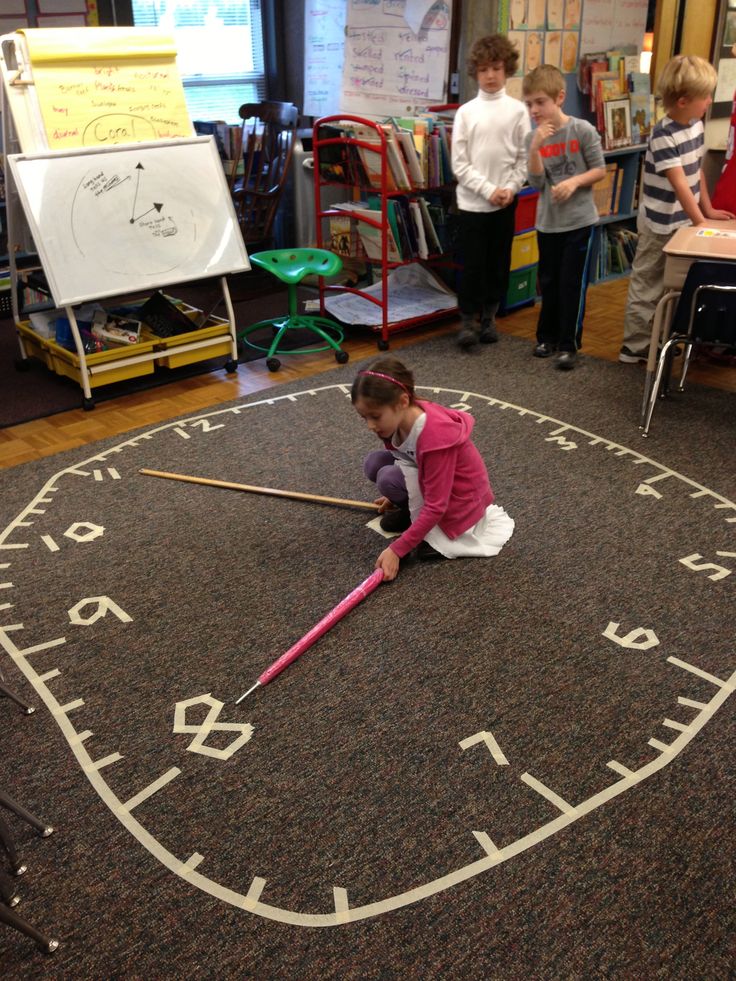 To begin, divide students into groups of four or five. Supply each team with a raw egg, and task them with creating a situation in which the egg will not break when dropped from a certain height (say, six feet). Teams are then free to make use of whatever objects in the classroom might be helpful in achieving their goal. After a set time period, ask the teams to demonstrate their work.
To begin, divide students into groups of four or five. Supply each team with a raw egg, and task them with creating a situation in which the egg will not break when dropped from a certain height (say, six feet). Teams are then free to make use of whatever objects in the classroom might be helpful in achieving their goal. After a set time period, ask the teams to demonstrate their work.
Earlier versions of this game supplied each team with a box of plastic straws, with which they would then build a cushioning device. However, as single-use plastics fall further out of favor, it’s better to encourage students to work with the items they have on hand.
34. Balancing the Hula Hoop
The object of this game sounds straightforward: Teams of four or five work together to lower a hula hoop from about nose-height to the floor, using only the very tips of their fingers. As your students will come to learn, however, it’s much more difficult than it looks.
35. Hula Hoop Hustle
Hula Hoop Hustle
If you still have those hula hoops and the students are bored with the balancing game, consolidate them into larger groups of about 10. Have each team form a circle by holding hands, with a single hula hoop in between two of them. Challenge them to move the hula hoop in a complete revolution without breaking the circle. They may do this by maneuvering the hoop over their heads, under their feet, or by whatever means they can come up with, as long as they don’t let go of one another’s hands.
36. Eye Contact
Eye Contact provides an excellent way to foster nonverbal communication skills.To play, choose 10 students for the first round (the others can watch in the meantime). Choose a single student to act as “Player One,” and designate a “Go” signal (such as winking or making an “O” shape with your mouth). Player One should then attempt to make eye contact with another participant. When they’ve succeeded, they should give the “go” signal, at which time the second player takes Player One’s place in the circle to repeat the same process with another participant.
No verbal communication or hand signals are allowed during play. If a player breaks this rule, he or she is disqualified, and their place is taken by one of the observers. Once everyone in the round has made eye contact and give up their place in the circle, switch teams until all the observers have had a chance to play as well.
Cooperative Card Games
37. Spaceteam
In this game (recommended for older children, ages 10 and up), players are tasked with repairing a damaged spacecraft while dodging asteroids and wormholes along the way. To ramp up the challenge, they also must reveal six “System-Go” cards inside the time limit, or all of their work has been for nothing.
38. Hanabi
Hanabi can be played with as few as two participants, but it gets more interesting when more players are added (up to five). The unique concept invites participants to orchestrate a fireworks show, utilizing a series of numbered cards. If the display is finished before the pile of cards runs out, the team wins. Play is fairly fast-paced—a single game can be played in about half an hour—and is suitable for ages eight and up. The playing kit also includes a “rainbow” set of cards to make things more challenging, once your team has mastered the basic game.
Play is fairly fast-paced—a single game can be played in about half an hour—and is suitable for ages eight and up. The playing kit also includes a “rainbow” set of cards to make things more challenging, once your team has mastered the basic game.
39. Shamus
This is a two-player cooperative card game, and one of the few to utilize a standard deck of playing cards. A cross between Uno and Rummy, the rules are not difficult to follow, but they are somewhat lengthy to explain—a complete breakdown can be found here. Essentially, both players (one following the rules of Rummy, the other playing a solo game of Uno) must achieve the goals of their respective games before the “Circle of Shamus” (a ring consisting of 10 cards) has been depleted. It’s addictive, and a good choice for families with smaller households.
40. 5-Minute Marvel
For superhero fans, this game is a must-try. Each player assumes the role of a different superhero as a five-minute timer is set.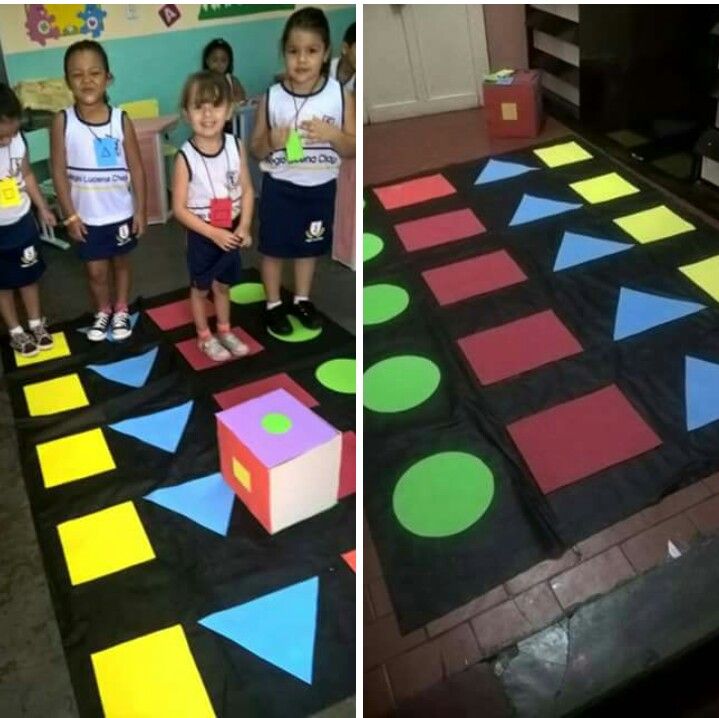 During play, the cards keep turning up new threats in the form of increasingly powerful bad guys. The objective is to work together to defeat all the villains before the time is up.
During play, the cards keep turning up new threats in the form of increasingly powerful bad guys. The objective is to work together to defeat all the villains before the time is up.
41. Cahoots
This cooperative card game is like a fancier take on Go Fish, except the players are working together (“in cahoots”). In order to win the round, the team has to match all of their cards by either color or number before the time clock runs out. Play is fast-paced and easy to follow, even for younger participants.
There you have it, 41 fun cooperative games for kids. Make sure you check out our competition games as well as our kids team names.
Top 20 Fun Cooperative Games For Kids
Playing is much more fun when you play together to attain shared goals.
Research-backed
MomJunction believes in providing reliable, research-backed information to you. As per our strong editorial policy requirements, we base our health articles on references (citations) taken from authority sites, international journals, and research studies.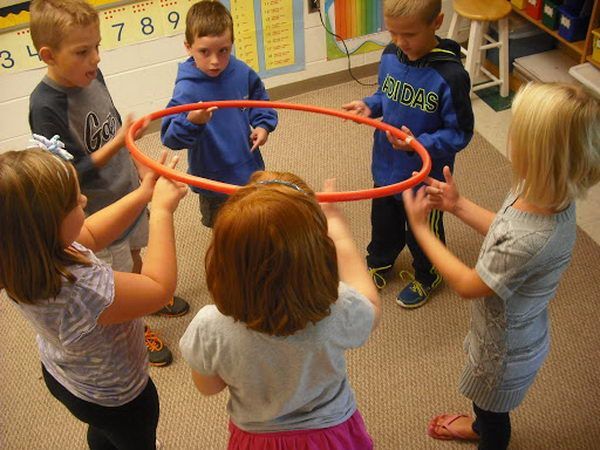 However, if you find any incongruencies, feel free to write to us.
However, if you find any incongruencies, feel free to write to us.
Image: Shutterstock
Cooperative games for kids help teach them the importance of teamwork and patience. Children can play co-op games with their friends or family members. The main objective of these games is not ‘winning’ but teaching them ways to work together towards achieving a common goal. These games also help develop your child’s communication, deduction, and planning skills.
Read on for a curated list of cooperative games we have listed in this post for children of all ages to have a fun learning experience.
20 Cooperative Games For Kids
1. Tower building
Image: Shutterstock
Tower building is a cooperative game for kids that can be played by adults too. It teaches teamwork and develops your preschooler’s counting skills. Children as young as three years can play this game effortlessly.
Age group:
3 years and up
You will need:
- A pair of dice
- Blocks
How to play:
- Make teams of two.
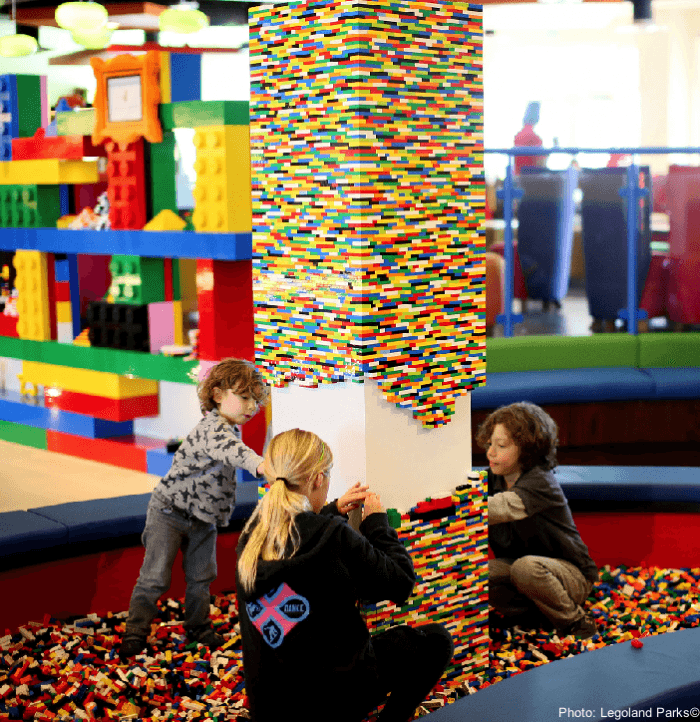 If your child is young, pair them with someone older.
If your child is young, pair them with someone older.
- Keep the blocks in a common area accessible to all teams.
- A member of each team rolls a dice.
- The number on the dice is the number of blocks they must lift to build their tower.
- The team with the highest tower after every team member rolls the dice wins.
2. Candy Land
Image: Shutterstock
Candy Land is one of the oldest and easiest cooperative games. It doesn’t require any reading skills, and there is no strategy involved. Thus, even very young children with limited counting abilities can play this game.
Age group:
3 years and up
You will need:
- Candy Land board game set (you can make it yourself at home, too)
How to play:
- Candy Land comes with a set of cards with colored marks on them and a board with a colorful maze on it.
- Each player has to pick the topmost card, check the color on it, and move their marker to the next square of that color.
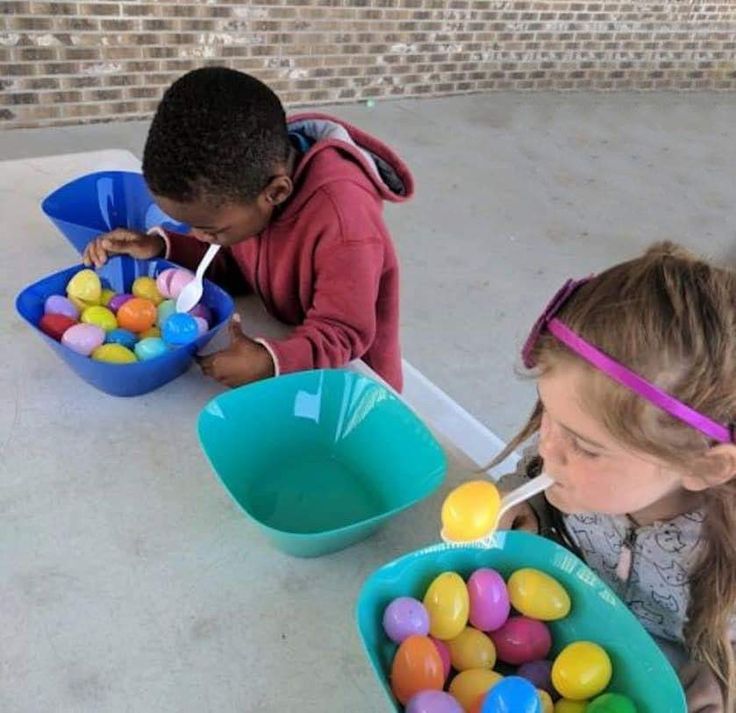
- If a card has two marks of one color, the player has to move their marker to the second occurrence of that color from their current location.
- Some cards might have the name of a location. These locations are specified in certain squares on the maze. The player can directly move to that location.
- The first player to reach the end of the maze is the winner.
3. Dragon’s jewel
Image: Shutterstock
This cooperative game is best played outdoors or in a large play area. It is a great game to teach teamwork and develop communication and quick-thinking skills. You can also develop your child’s gross motor skills with this game.
Age group:
4 years and up
You will need:
- Football or basketball
- Cones for marking
How to play:
- Make a circle with the cones.
- Place a ball at the center of the circle. This is the dragon’s jewel.

- One player is the dragon.
- Divide the other players into teams of two or three.
- Each team takes turns to work together and get the dragon’s jewel. The dragon tries to tag them before they get to it.
- If the dragon tags a player of a team, the team is out, and the next team continues the game.
- If a team manages to capture the jewel, choose a new dragon for the next round.
4. Bandido
Image: Shutterstock
Bandido is a popular board game for young ones who love mysteries and puzzles. This game makes your child think about their next move and improves their critical thinking skills.
Age group:
4 years and up
You will need:
- Bandido board game set
How to play:
- Each player has three cards, and each card has a piece of a tunnel — it could be a bend, a straight pass, a branch, or a dead end.
- The first player starts with a card, and the other players add their cards.
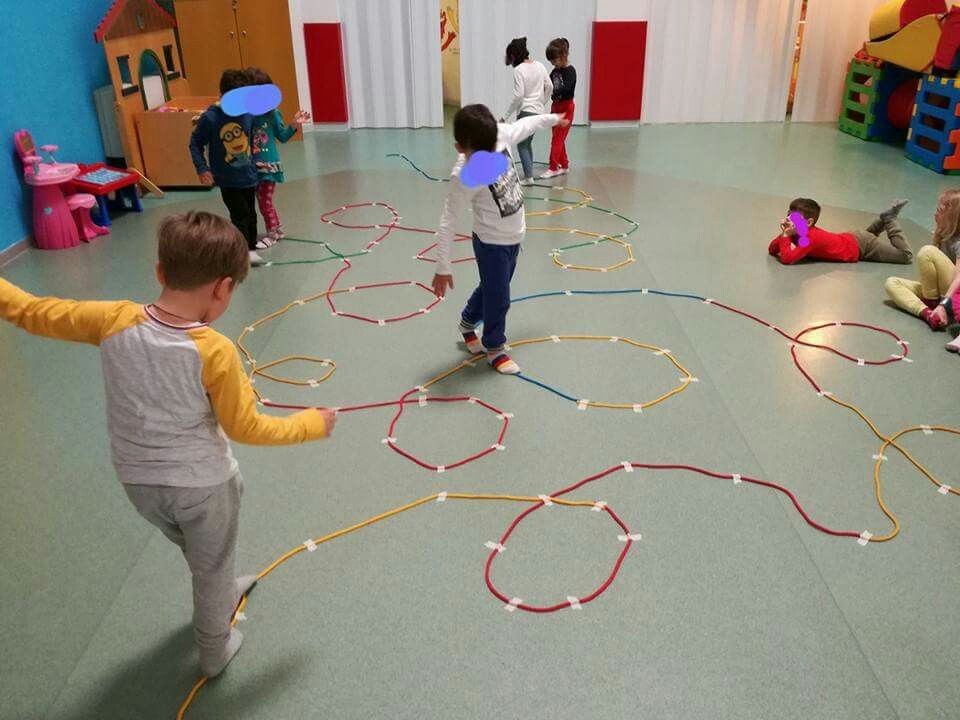
- The goal of the game is to prevent the imaginary prisoner at the start of the tunnel from escaping.
5. Airplane game
Image: Shutterstock
Try this game if you want to improve your child’s listening and speaking skills. Listening and speaking are essential components of effective interpersonal communication.
Age group:
3 years and up
You will need:
- A cloth for blindfolding
How to play:
- Blindfold a child. This child is the pilot.
- Select another player as the navigator.
- Make the other members stand in different places. They are the trees.
- The navigator has to guide the pilot across the runway without letting the airplane crash into any of the trees. The navigator can give only one instruction at a time.
6. Outfoxed
Image: Shutterstock
Outfoxed is one of the best cooperative games that can be played by children and adults alike.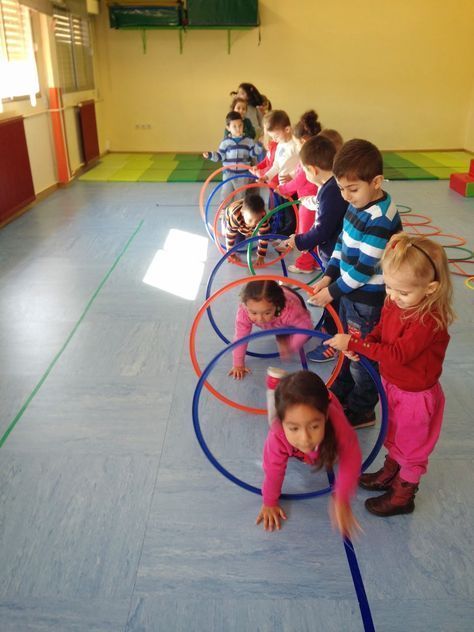 If your child loves playing detective, they will take to this game in no time.
If your child loves playing detective, they will take to this game in no time.
Age group:
5 years and up
You will need:
- Outfoxed game box
How to play:
- One of the foxes in the game has stolen a pot pie. The players have to find the culprit.
- Slip a card with the name of the culprit into the special contraption provided for this purpose.
- Each player rolls the dice and decides whether they want to collect clues or reveal the answer.
- Each wrong answer brings the fox closer to escaping.
- Every right answer gets the player a new clue of the culprit or two new suspect cards.
- The player who gets the right culprit or eliminates all of the suspects but one is the winner.
7. All over
Image: iStock
This game is great for sleepovers and family holidays. The more the players, the more enjoyable the game.
Age group:
4 years and up
You will need:
- Big, softballs according to the number of players
- A rope
How to play:
- Divide the players into two teams and make them stand on two sides of the rope.
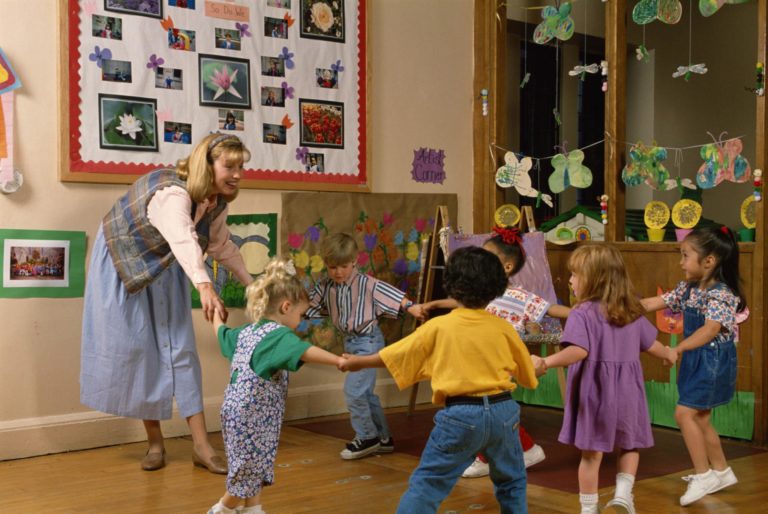
- Once the leader shouts, “All Over!” the players throw, kick, or roll the ball towards the opposite team.
- The players of each team have to catch the incoming balls while launching their respective balls.
- Once the passing stops, count the number of balls caught by each team. The team that catches the maximum number of balls wins.
8. Pandemic
Image: Shutterstock
If your child often imagines emergency situations and rescue missions, this board game is perfect for them. Pandemic is the right choice for a family game night or a rainy afternoon to engage your children for hours. You can also use this opportunity to teach your children about the current Covid-19 pandemic.
Age group:
8 years and up
You will need:
- Pandemic board game set
How to play:
- Each player is out in the world as a part of a disease-fighting
- All the players work together to prevent the outbreak of diseases and keep the world safe.
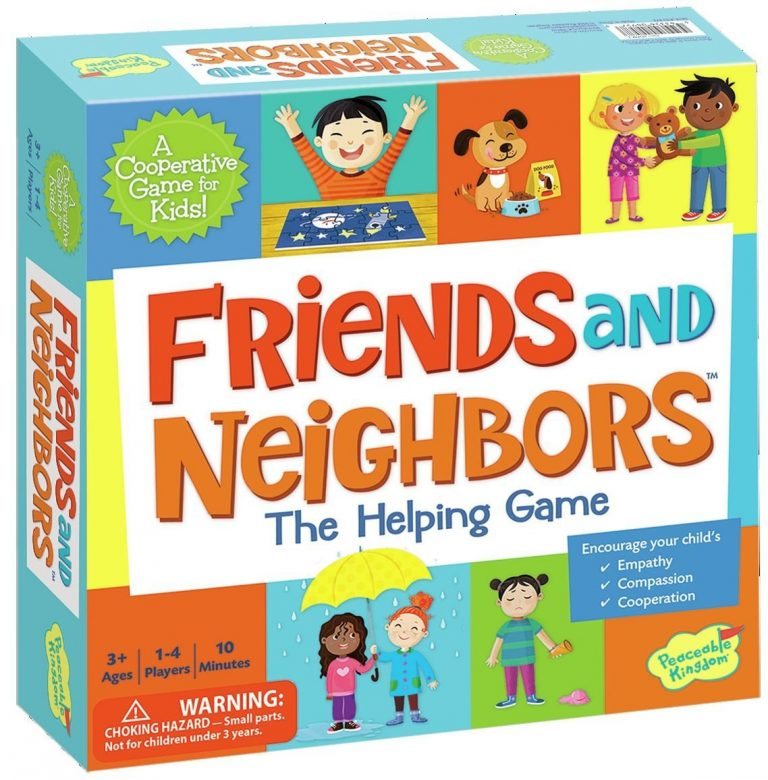
- They travel across the board to different countries, treat infections, collect cures, and build research stations within a stipulated time, that is, before the diseases spread beyond recovery.
9. Ghost Fightin’ Treasure Hunters
Image: Shutterstock
This is another very popular board game that includes treasure and ghosts. Children love finding treasures and are curious about ghosts, so this game is a great co-op game for kids.
Age group:
6 years and up
You will need:
- Ghost Fightin’ Treasure Hunters board game set
How to play:
- The aim of the game is for the players or treasure hunters to find all the treasures in a haunted house.
- If there are three ghosts in a room, that room is considered haunted.
- If six rooms are haunted before the players get the treasures, all of them lose.
- You can go together or separately, fight the ghosts, or run back with the treasure.
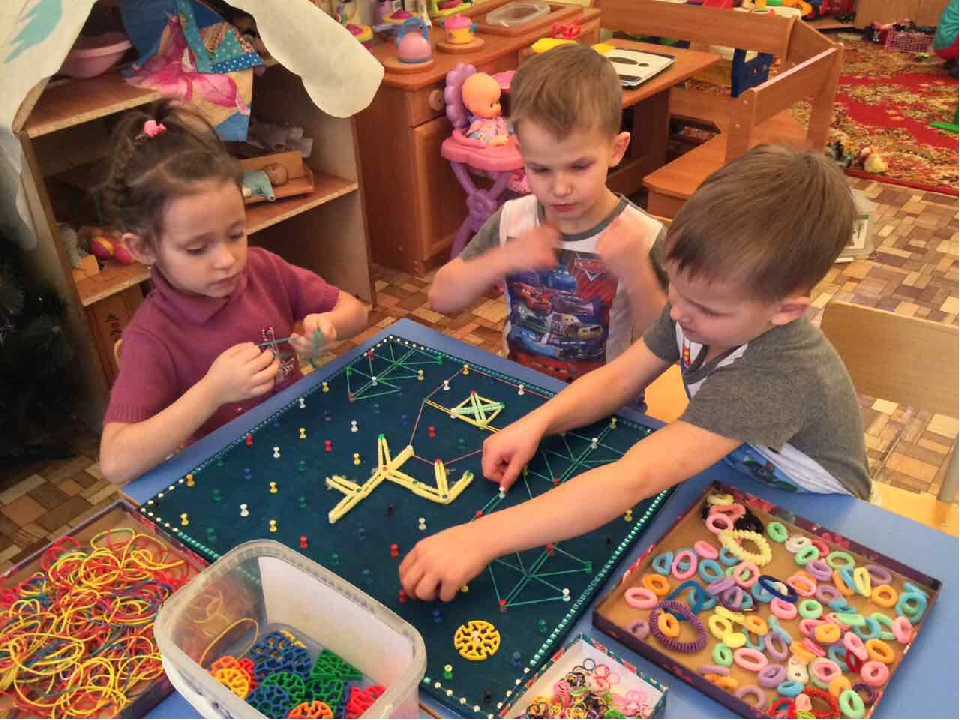 Each step needs planning and strategy for getting the treasure before the ghosts get you.
Each step needs planning and strategy for getting the treasure before the ghosts get you.
10. Assassin
Image: Shutterstock
If you have a group of children, this game is a good option for you. Prepare to spend a few hours laughing with your children as they enjoy playing this game.
Age group:
5 years and up
You will need:
- A group of children
How to play:
- Make the children sit in a circle with their heads down.
- One person (preferably the adult) should walk around the circle and tap one child on the head. This child is the assassin. No other player knows who the assassin is.
- The child looks at the others and assassinates them by winking at them.
- The other players can guess who the assassin is but are out of the game if they make a wrong guess.
- If the assassin is successful in assassinating every other player, they are the winner.
11.
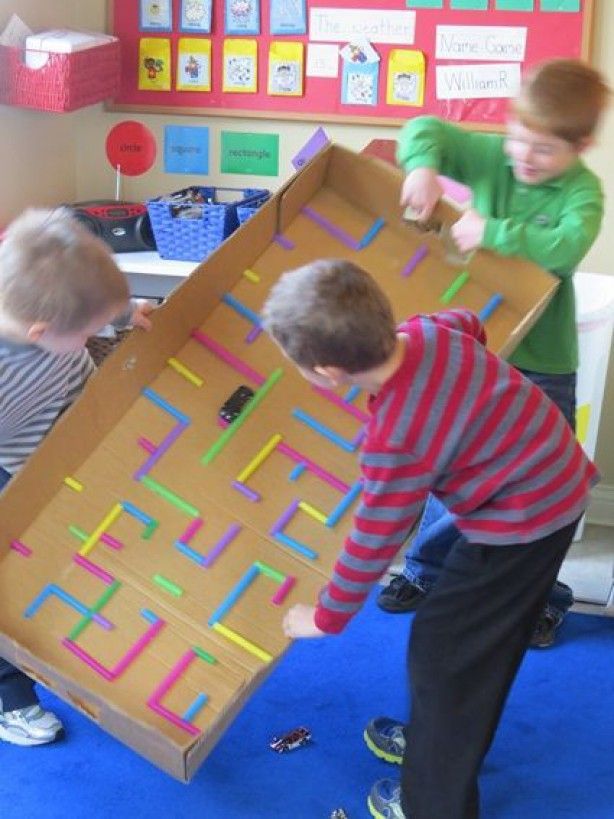 Iceberg
Iceberg Image: Shutterstock
This game is fun, especially for younger children. It involves a bit of quick thinking and is best played in large groups.
Age group:
3-10 years
You will need:
- Bedsheet, tablecloth, etc. for the surface
How to play:
- Divide the children into two teams. Give each team a bedsheet or a tablecloth.
- Spread the sheet on the floor. This is the surface for the game.
- The whole team should stand on the surface. Anyone standing outside the surface is eliminated from the game,
- Next, ask the players to step off and fold the sheet in half. Stand again on the sheet.
- Continue in this fashion till there is no space for all the players to fit on the sheet.
- The team that makes the maximum folds while accommodating the most number of players wins.
12. Race to the treasure
Image: Shutterstock
Here’s another cooperative board game that requires strategic skills but offers loads of fun.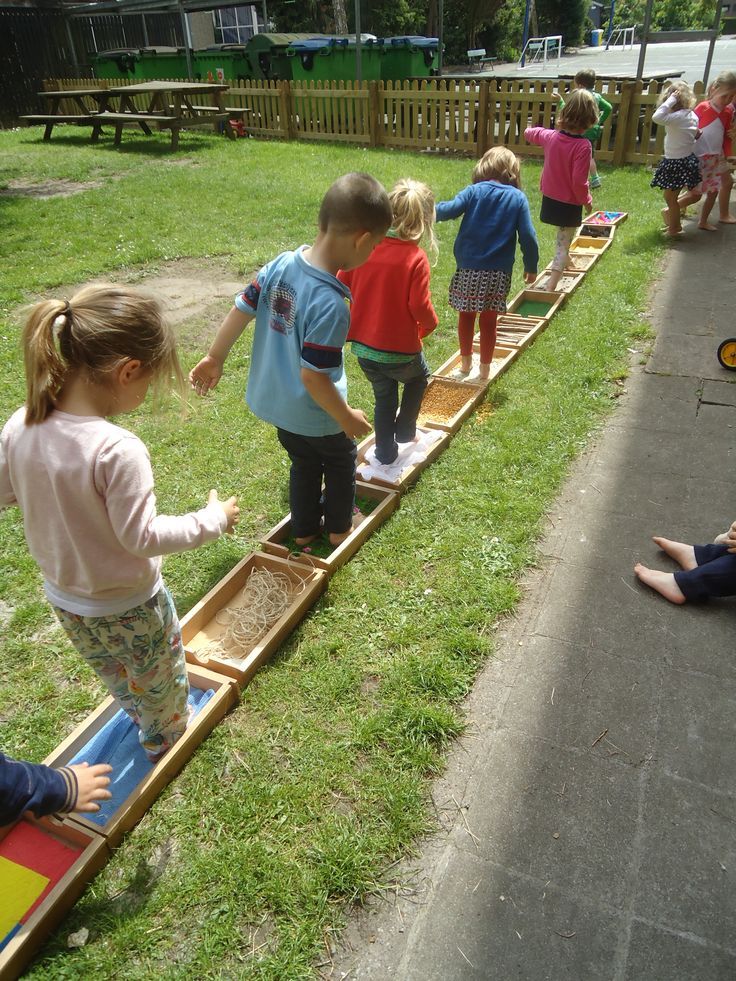 This is a great co-op game for the whole family, even if your children are very young.
This is a great co-op game for the whole family, even if your children are very young.
Age group:
3 years and up
You will need:
- Race to the treasure board game set
How to play:
- The players take turns to draw cards..
- If you draw a path card and not an Ogre card, you move further in the race.
- Retrieve three keys on the way to get the treasure.
- The aim of the game is to reach the treasure before the Ogre does. If he does, you all lose.
13. Band-aid tag
Image: iStock
This is a cooperative outdoor game you can teach your children to play. Besides playing together, this game tests and develops your children’s flexibility.
Age group:
4 years and up
You will need:
- A group of children
How to play:
- Select one person as “It.”
- The person must run behind other players and tag them.
- The tagged person must hold their hand (the band-aid) over the part where the “It” tagged them.
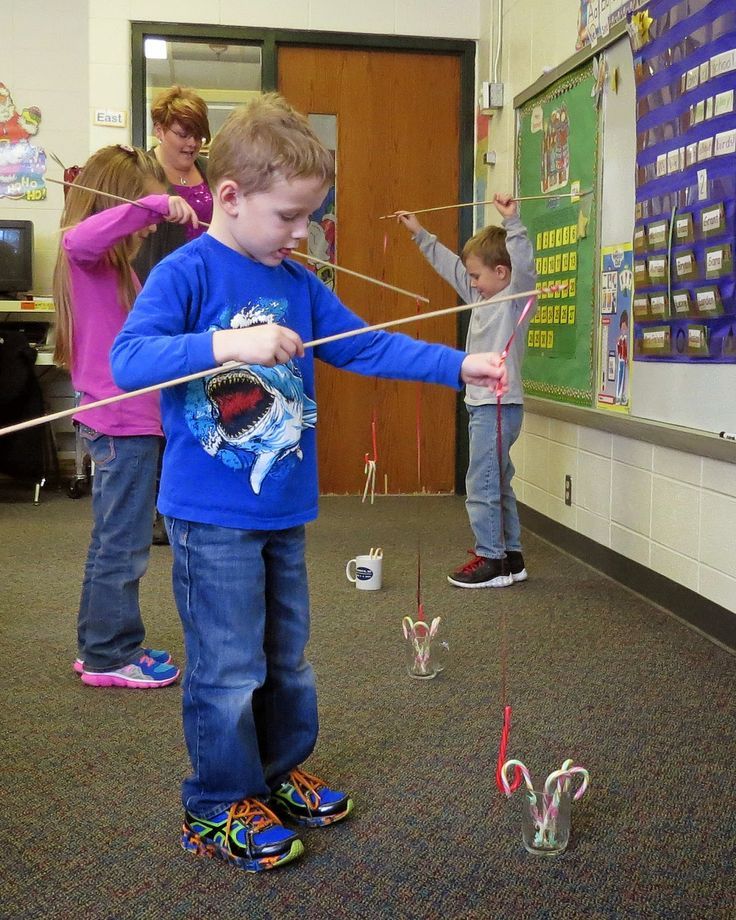
- When a person runs out of band-aids (gets tagged two times), they freeze.
- Two other players have to come over to the frozen player and unfreeze them by counting to five.
- Continue playing the game, changing the “It” from time to time.
14. Rope circle
Image: Shutterstock
This is a cooperative game for kids of all ages. It is best played when there is a large group of children. Adults can play it at gatherings, too, for a good time.
Age group:
3 years and up
You will need:
- Jump ropes
How to play:
- Divide the players into teams of two players each.
- Tie one wrist of each partner with the jump rope – the left wrist of one person and the right wrist of the other person.
- Then tie a second jump rope joining the other wrist.
- Make sure the ropes are not tied very tightly.
- The players should attempt to free themselves from one another without actually untying the ropes or breaking out from the circle.

15. Barnyard
Image: iStock
If you want to teach animal names and sounds to your children, play this game with them. This game is perfect for sleepovers and birthday parties when there are many children.
Age group:
3 years and up
You will need:
- Pieces of paper
- Pen
How to play:
- Write various animal names on the pieces of paper. Include four to five pieces of paper for each animal name.
- Ask each child to pick one piece of paper. The child is the animal mentioned in the paper. No other child must know what animal another child is.
- Next, ask the children to scatter over the play area.
- Once the game starts, each child wanders over to other children and tries to determine the similar animals like them.
- Children who find all the members of the same animal are the winners.
16. Ball builders
Image: iStock
This is a game that children of all ages love.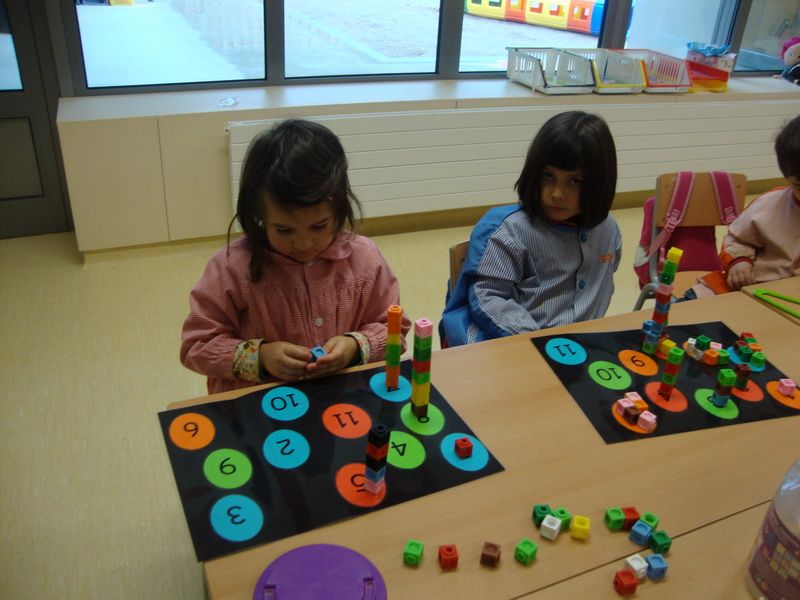 It teaches children the value of teamwork and develops their communication and gross motor skills.
It teaches children the value of teamwork and develops their communication and gross motor skills.
Age group:
3 years and up
You will need:
- Tennis balls
How to play:
- Divide the players into teams of two or three.
- One player in each team will be the holder, and the others will be the builders.
- The builders start handing over tennis balls to the holder.
- The aim is to see how many balls the holder can hold without using their pockets or other clothing. They cannot hold the balls against any other surface other than their own bodies.
- Each ball must be held for at least 10 seconds.
- The players can take turns doing it.
17. Bedsheet ping pong
Image: Shutterstock
This is a great game for family game night. As versatile as this game is, it is also very simple. You can use household items to play the game.
Age group:
3 years and up
You will need:
- A bedsheet
- Ping pong balls or even crumpled balls of paper will do
How to play:
- Divide the players into two teams.
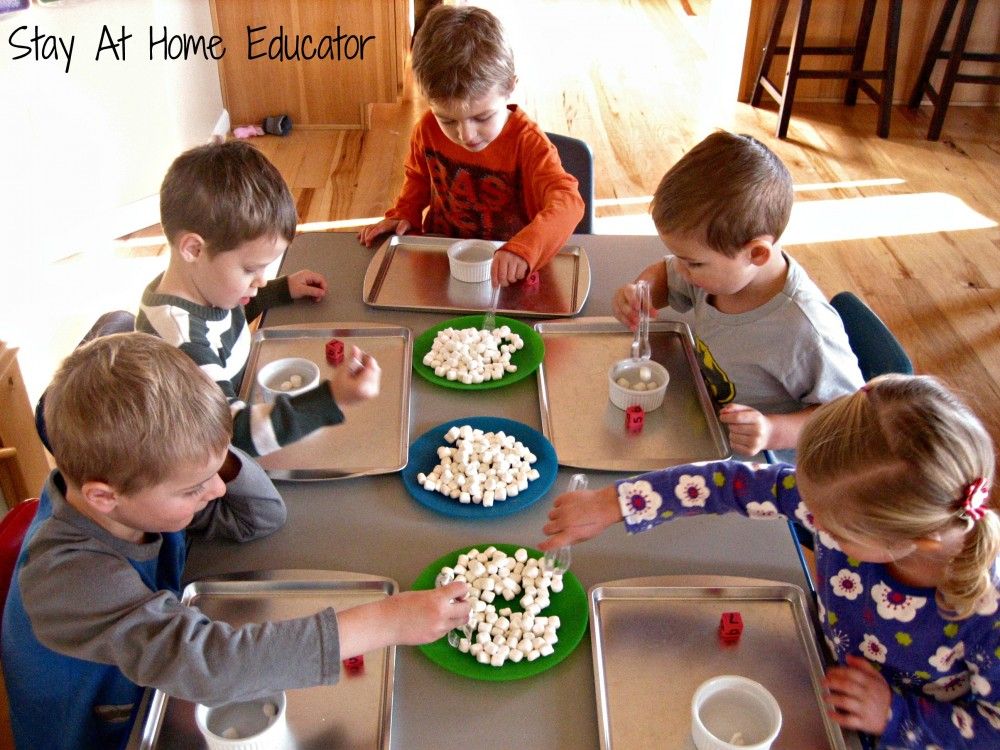
- Each team holds the opposite sides of the sheet.
- Put the balls in the middle of the sheet.
- Each team has to raise or lower their end of the sheet. The aim of the game is to get the balls to fall on the other side of the sheet.
- The players must take care not to launch the ball during play.
18. Crossing the river
Image: iStock
Crossing the river is a cooperative game for kids that can come in handy in actual life too. This game is excellent for developing their communication skills.
Age group:
4 years and up
You will need:
- Rope (optional)
How to play:
- Divide the players into groups of two to five players each.
- Each team joins hands, touches legs, or uses a rope to get across the “river”(the play area) around 20-30 feet across.
- Each group must move to the other side without losing contact.
- If a player loses contact with other players, the team must start over from the beginning.
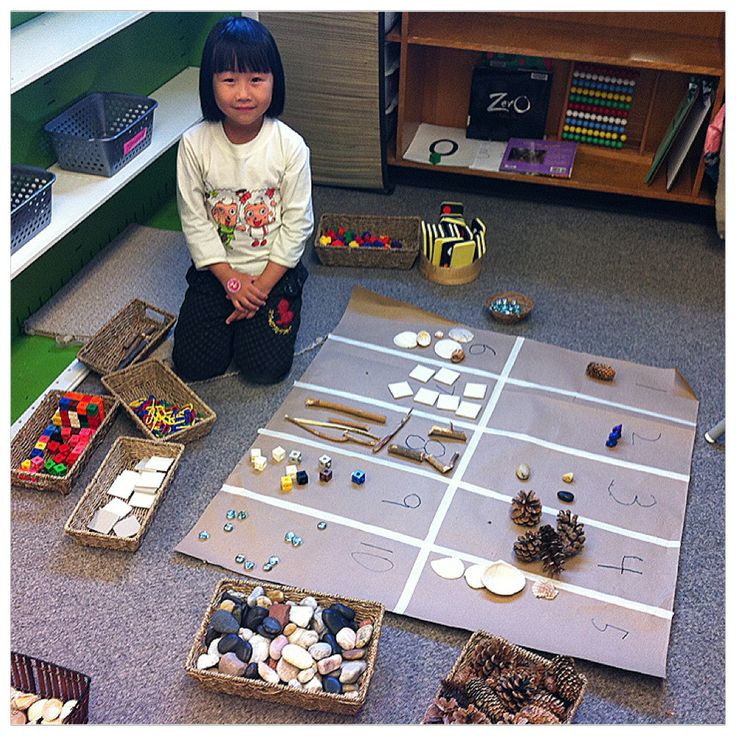
19. Birthday line-up team building
Image: Shutterstock
When you have a large group of children with you and want them to get along with each other, this game is an excellent option for you. It acts as an ice breaker and gets your group to mingle with each other easily.
Age group:
5 years and up
You will need:
- A group of children
How to play:
- Once the game starts, the players shouldn’t talk until you permit them.
- Make all the children stand in a line.
- Next, get them to stand in a line based on their height, in silence.
- You can give them different challenges, such as lining them up by birthday month, the initials of their names, etc.
20. Shipwrecked
Image: Shutterstock
This is another game that you can play when you have a lot of children with you. It is a great game to develop teamwork in a fun way.
Age group:
5 years and up
You will need:
- Large hoops
How to play:
- Divide the players into teams of 8-10 players.
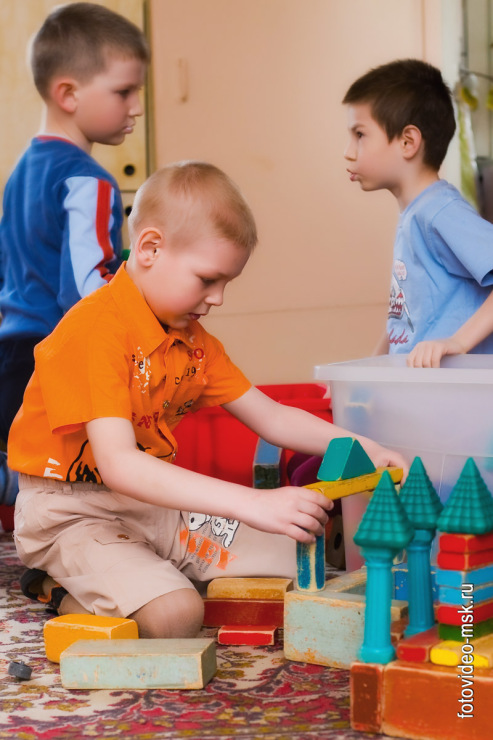
- Give a hoop to each team. This hoop is their spaceship.
- Once the game begins, each team should grab their spaceship and race to the finish line.
- All the players of the team should be in contact with the spaceship at all times.
- Once they cross the finish line, they put down the hoop, call out “Shipwrecked,” and try to get within the hoop.
- The first team to get all the players into the hoop is the winner.
Cooperative games for kids are the best way to teach them leadership skills, teamwork, and patience. Tower building, Candy land, Dragon’s jewel, and Bandido are some of the most exciting team games for children. You may choose a game appropriate for the age of children and other participants. These games can also be played with adults at family nights and parties. You may let the children take charge of the team and decide how to win the game. Team games also boost a child’s ability to engage and communicate.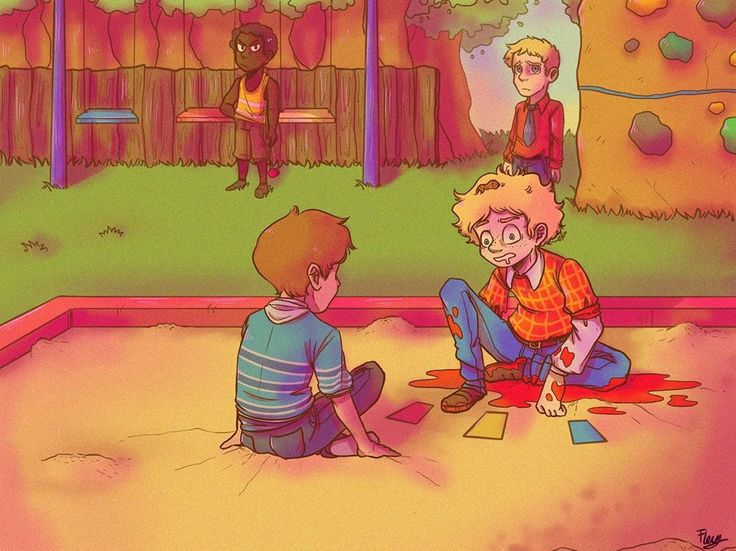
Key Pointers
- Building a tower is a cooperative game for kids that teaches teamwork.
- Race to the treasure is a board game that helps children develop strategic thinking skills while having fun.
- Bedsheet ping pong, All Over, Bandido, and more interesting games as you scroll down.
The following two tabs change content below.
- Reviewer
- Author
Nisha Bharatan is a freelance writer with experience in writing health and finance content for various Indian and international clients. After completing her engineering from Savitribai Phule Pune University, she did content marketing courses to complement her interest in writing. Nisha writes articles centered around kids’ development, their activities, crafts, games, and fun elements that keep children and families entertained.... more
Dr. Maymunah Yusuf Kadiri, popularly referred to as ‘The Celebrity Shrink,’ is an award-winning neuro-psychiatrist and mental health advocate with over 15 years experience.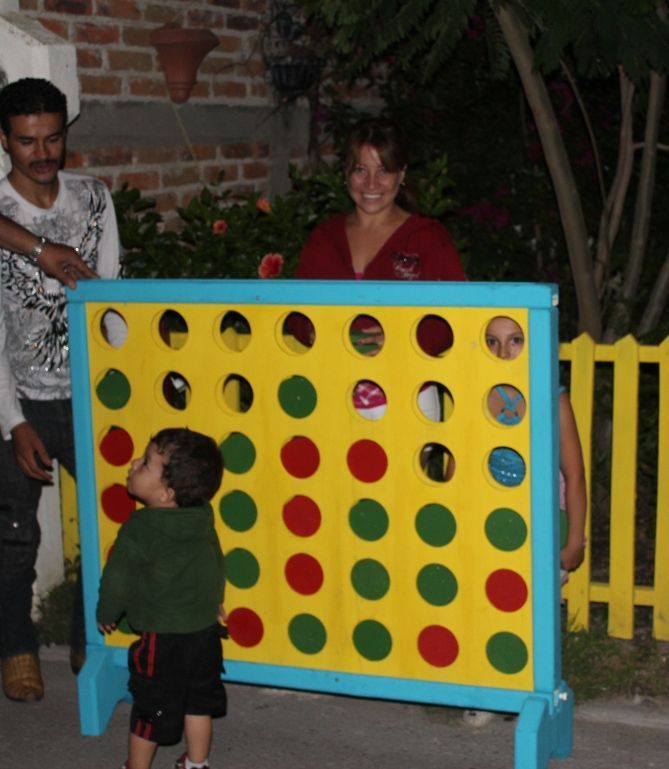 She is the medical director and psychiatrist-in-chief at Pinnacle Medical Services. She has created the innovative mental health app in Africa, HOW BODI. Dr. Kadiri is a Goldman Sachs Scholar on Entrepreneurial Management of Pan Atlantic... more
She is the medical director and psychiatrist-in-chief at Pinnacle Medical Services. She has created the innovative mental health app in Africa, HOW BODI. Dr. Kadiri is a Goldman Sachs Scholar on Entrepreneurial Management of Pan Atlantic... more
42 ideas for a great pastime
In the era of prosperity of technology, endless cartoons and the same endless feeds in social networks, both children and parents began to forget about simple communication, looking into each other's eyes, and not at the screen of a TV, tablet or smartphone. Think about how long it has been since you played with your child? Oddly enough, even the ideas for the simplest and once popular games have long been lost in memory and have undeservedly lost their relevance.
Games for children are not only a great way to spend time with the family, but also an opportunity to develop thinking, memory, logic, reaction speed. We have collected the best children's games that will captivate the whole family and give a charge of vivacity and positive for a long time.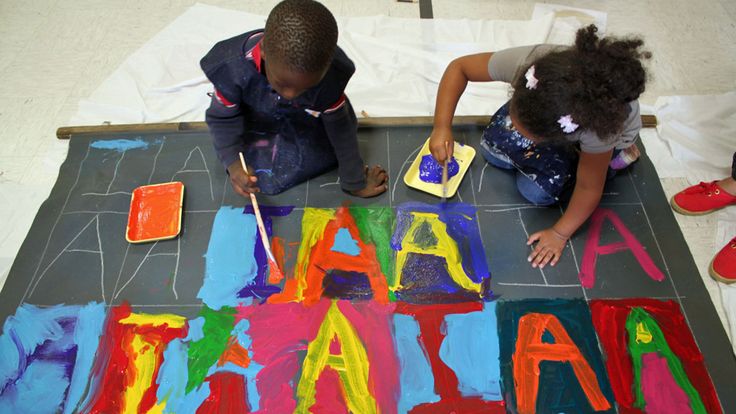
Contents:
- Children's play at home
- Entertainment games for children at home: types
- Active games
- Sports games
- Competitions
- Development games
- Speech games
- Construction of houses
- Math games
- Interesting games for two children
- Role-playing games
- Unusual home games
- Music games
- Water games
- Interesting games
- Advice to parents
Children's games at home
Entertaining games for children have many advantages: they bring together all family members who take part in the process, allow you to spend time rich and exciting, without gadgets and TV. The game is a powerful tool for the development of your child. When planning to spend time together blowing dust off a box of checkers or a long-forgotten Monopoly, keep a few things in mind:
- Try not to prompt your child.
 Make an exception to the rule only if he does not yet know the rules. Let them learn to make mistakes and draw conclusions. Undoubtedly, you know more, but let the baby be independent.
Make an exception to the rule only if he does not yet know the rules. Let them learn to make mistakes and draw conclusions. Undoubtedly, you know more, but let the baby be independent. - Do not give in, you must be equal. Therefore, it is worth choosing interesting games for children, where the process does not require encyclopedic knowledge or vast experience, and the rules are simple and understandable for everyone.
- You need to play only with pleasure, getting pleasant emotions. If you notice that the children don’t like the game or they get bored, it’s better to switch to another one: it’s definitely not worth forcing anyone to have fun.
Entertainment games for children at home: types
What kind of games are there in a confined space? When thinking of entertainment, consider the possibilities of an apartment or house and the age of the child. Excessive noise should not be raised late in the evening, and too primitive games are unlikely to be appreciated by a senior student.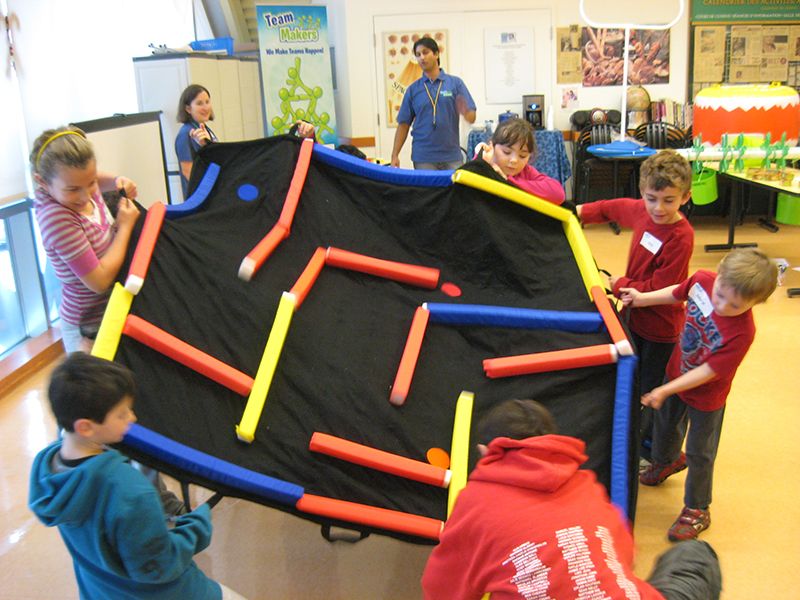 Therefore, alternate, experiment, and you will definitely select exactly those family games that will captivate everyone, and just spend time with children without a computer.
Therefore, alternate, experiment, and you will definitely select exactly those family games that will captivate everyone, and just spend time with children without a computer.
Active games
1. Let's go!
Have your child pretend to be a car driving down a dark road. To do this, put a few chairs or other objects, give the child a steering wheel or its round substitute, and blindfold. You are a navigator, a kid is a car, turn on and go! Try switching places so that the child also tries himself as a helper.
Suitable for age: 5-8 years old.
2. Hold the balloon
This kids game will require a balloon and some skill. Task: move the ball from one end of the room / corridor to the other without touching it with your hands and without letting it fall. Let the children be smart: you can blow on the ball, push it with your nose, chin, knees.
If there are two children, arrange a competition: who will bring the ball to the finish line faster.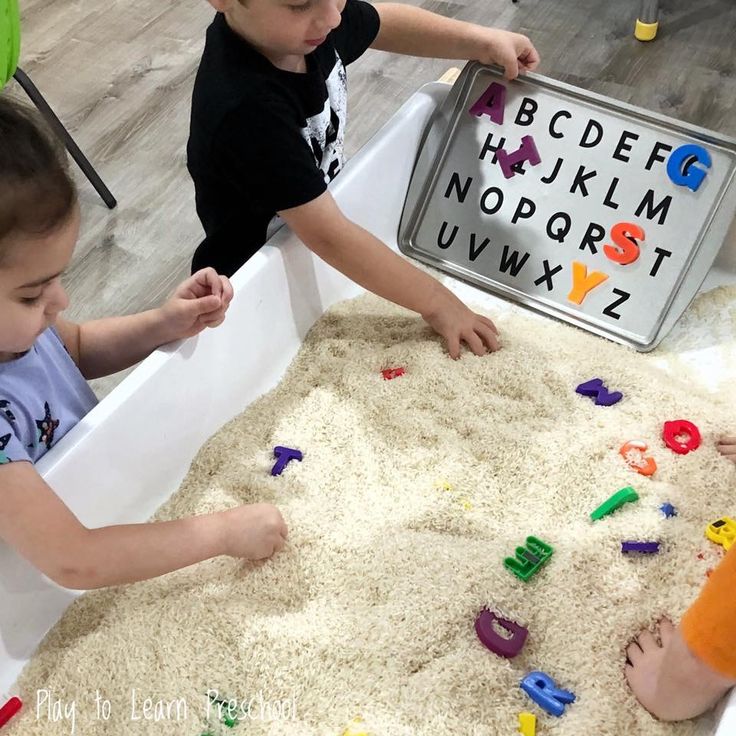 For older participants, the task can be made more difficult by building a path or placing small obstacles to get around.
For older participants, the task can be made more difficult by building a path or placing small obstacles to get around.
Suitable for age: 5-15 years old.
3. Cross the river
Ropes, ribbons or two pieces of rope, laid out at a distance of one and a half to two meters from each other, can play the role of the banks. From paper, cut out circles that will replace the pebbles.
Invite the child to "get over" from one bank to another, stepping over the stones without "wetting" the legs. The game is simple, but perfectly develops coordination of movements in children 3-5 years old.
Suitable for age: 3-5 years old.
4. "Brilliant" basketball
In the conditions of an apartment, entertaining games for children with a ball are not very convenient, but if you replace it with small foil balls, and build a basket from a children's bucket or a cut-off five-liter bottle, you get quite a decent basketball.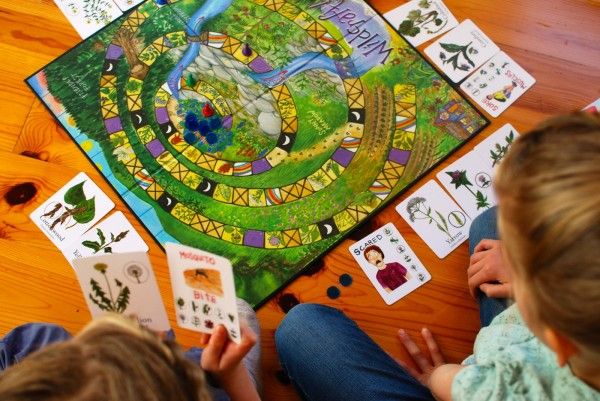
The competition can be made more difficult: throw in turn with the left and right hand, count who will have more hits per minute, vary the distance from the player to the basket.
Suitable for age: 5-13 years old.
5. Classics
The good old "jumping" is definitely worth remembering and arranging a game even within an apartment or house. With construction tape on the carpet, “draw” a classic, a round candy box can be used as a “bit”. The main thing is to remember the neighbors below and try not to disturb their peace in the evening.
Suitable for age: 5-10 years old.
6. The fastest turtle
Turning into a turtle is easy! Get on all fours, put a pillow on your back and go to the finish line, so that your "shell" is not lost along the way. You can arrange a competition "Who is faster?" or which of the "turtles" will show the best time.
Suitable for age: 4-7 years old.
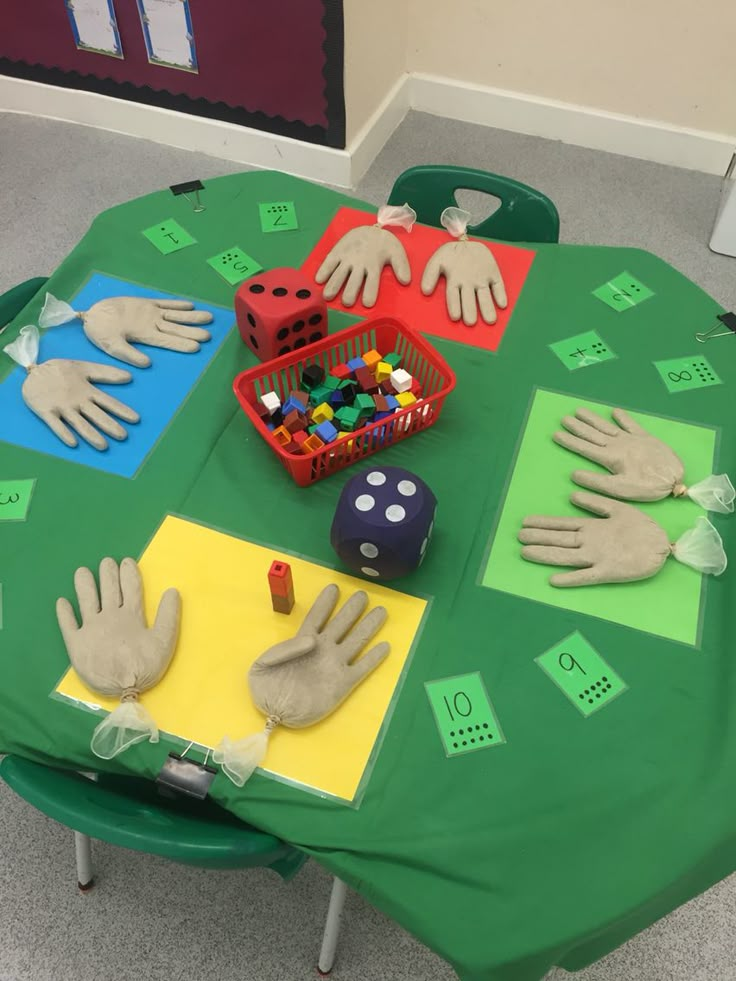
7. Insidious ball
Throwing the ball within the apartment is not the safest activity, so you can think of other activities with it. Lie on your stomach opposite each other, put the ball between your heads. Try to stand up while holding the ball with two hands, without the help of hands.
Another option would be to compete, in which case two balls would be required. Get on all fours and, on command, start rolling the ball, touching it with your forehead or nose, without helping with your hands. Whoever crosses the finish line the fastest wins.
Suitable for age: 5-10 years old.
Sports games
It is possible to entertain children at home with games not only for the purpose of entertainment. Motor activity is necessary, especially for a fidget baby. Come up with stories, remember your favorite animals or fairy-tale characters, accompanying interesting stories with movements as the story progresses. The child will be happy to imitate a bear, jump like a monkey or stretch his neck like a hissing goose. Mobile children's games will allow you to spend all the extra energy that the baby has accumulated, directing it in the right and useful direction.
The child will be happy to imitate a bear, jump like a monkey or stretch his neck like a hissing goose. Mobile children's games will allow you to spend all the extra energy that the baby has accumulated, directing it in the right and useful direction.
8. Jumper
Hang balloons from the ceiling at such a distance that the child can reach them only by jumping. Pre-fill them with foam balls, large confetti or other light fillers.
The child's task is to jump up, hitting the ball with his hand, and reach it. You can diversify the game by taking multi-colored balls and placing them at different heights, and then, naming the color, ask them to jump to each of them.
Suitable for age: 3-5 years old.
9. Gulliver and the Lilliputians
This activity is suitable for a group of children. Ask them to stand in a circle and tell them that everyone can imagine themselves both very small and very large, the main thing is to be attentive.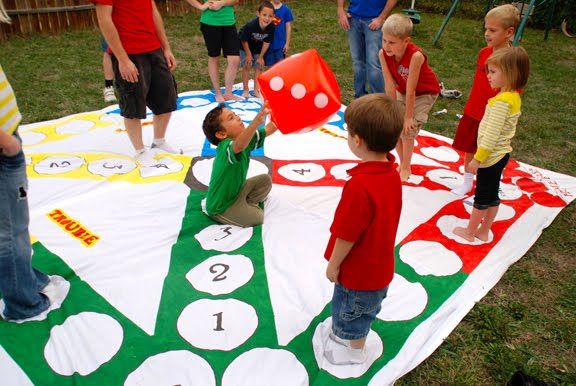
At the command of "Lilliputians!" (as an option for children: dwarfs, kids) children should sit down, at the command “Gulliver!” (or "Giants") - stand up. The most attentive wins the game.
Suitable for age: 4-5 years old.
10. Take off the feathers
The following game will help you run and practice your agility. Divide the children into two teams. One attach several clothespins to clothes. The task is to get rid of the “feathers” by attaching them to the clothes of the second team members. The one who first removes all the "feathers" from himself will win.
Suitable for age: 6-7 years old.
11. Who is faster?
If you need to keep the children company at home, offer them something like a small relay race. From the options for passing the distance, use:
- squatting;
- walking around the room with a balloon without touching it with your hands;
- walking with a bag of beans (or a book) on the head;
- jogging over obstacles (for example, without stepping on spread out pillows or, conversely, jogging on sheets of paper), etc.
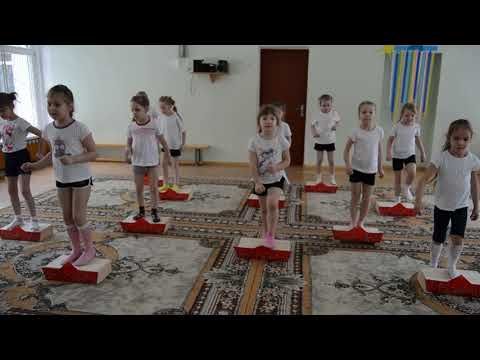
Suitable for age: 5-10 years old.
Competitions
Sedentary children's games will also help you out in a situation when children need something to keep them busy, especially since the place or time may not allow active movement. Such an activity requires, albeit minimal, but preparation. And it, as you know, is no less interesting than the process of the game itself.
12. Quiz
Invite the child to be the leader and prepare a competition, say, for a family dinner or tea party when the whole family gathers at the table.
Tell me what questions or riddles to choose, prepare prizes for correct answers, choose the winner, dilute the script with a musical break, turning on karaoke or dance music.
Such quizzes can eventually become thematic and turn into a good family tradition.
Suitable for age: 7-13 years old.
13. Answer in a minute
Prepare a list of simple questions and organize games for the children at home if you have two or more of them. Offer to try to give as many correct answers to the questions as possible in a minute.
Offer to try to give as many correct answers to the questions as possible in a minute.
In this way you will train the speed of thinking and the speed of reaction. Select questions from the area of general knowledge or on topics that children know well, as well as in accordance with age.
Suitable for age: 7-15 years old.
Family games for development
Entertaining games can be organized with children at home, using the simplest objects. Thus, you will develop logic, thinking and help your child explore the world. Do not forget that during the game the child learns.
14. Magic Pencils
Colored pencils or felt-tip pens are needed to play. You will repeat the colors and work on the development of observation and imagination in the baby.
Explain that pencils sometimes come to life and can daydream, imagining themselves as other objects. The red one said that he was a strawberry, the green one - a maple leaf, the yellow one introduced himself as the sun.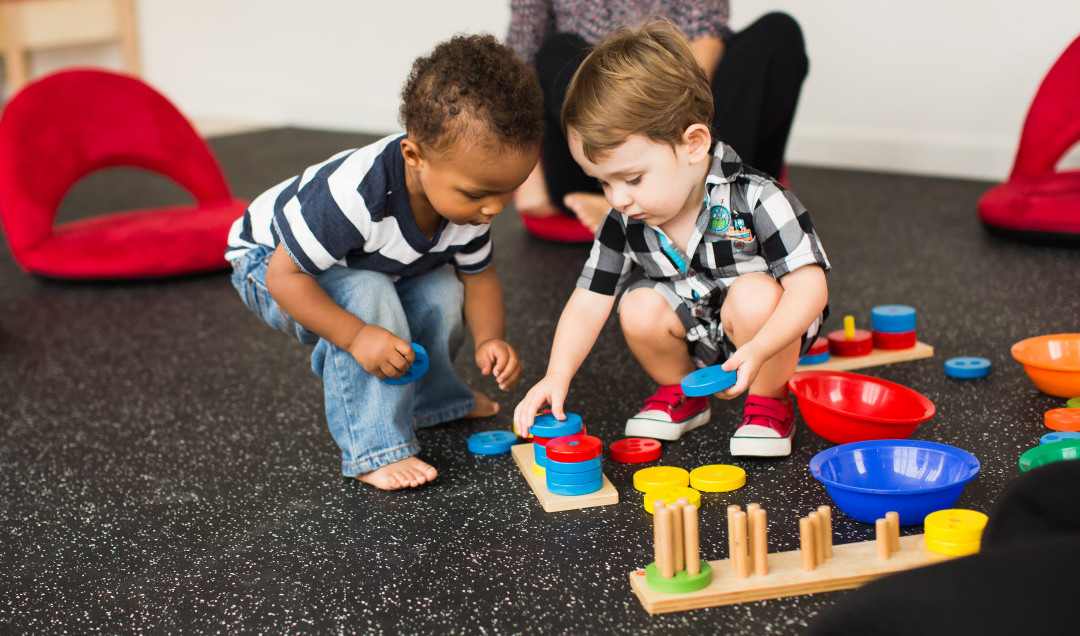
Invite your child to "voice" different colors of crayons by naming the corresponding objects.
Suitable for age: 4-5 years old.
15. Touch!
Another way to repeat or study colors is this game. The child needs to touch the object of the color that you name.
You can play within the same room, or you can complicate the task and look for a suitable color throughout the apartment. As an option, to train your memory, at the end of the search, ask the child to name the items that he found.
Suitable for age: 4-7 years old.
16. Draw a story
Making up stories is a favorite pastime for many children. But it can be diversified by inviting the baby to draw everything that you are talking about.
A variant of this story: “There was a big house on a green meadow. It had blue walls, a red roof, and gray smoke coming from a black chimney. The yellow sun smiled at the blue sky and blue clouds.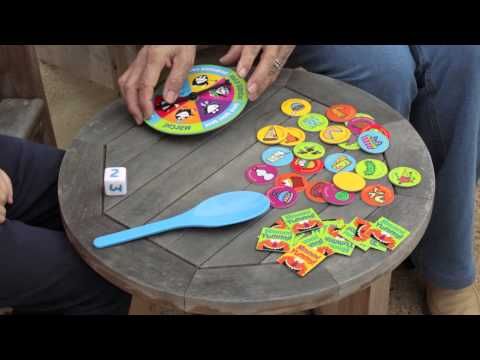 Red flowers grew around the house and multi-colored butterflies fluttered.
Red flowers grew around the house and multi-colored butterflies fluttered.
You can continue the story, add characters and objects, giving them a description. If the child likes this activity, roles can be reversed. Try to draw on paper everything that your creative child will come up with!
Suitable for age: 4-7 years old.
17. Attention to the picture
Children's favorite books usually contain a large number of pictures. For this game, drawings are suitable, which depict many different objects. You say, “I see something red in this picture. It does not know how to speak (as an option - to walk, ride, no pens, etc.).” The task of the child is to guess the object. Roles can be reversed.
Suitable for age: 4-5 years old.
18. Memory
Game ideas surround you even within the same room, so that with children at home you can develop any thought processes even with the help of ordinary toys.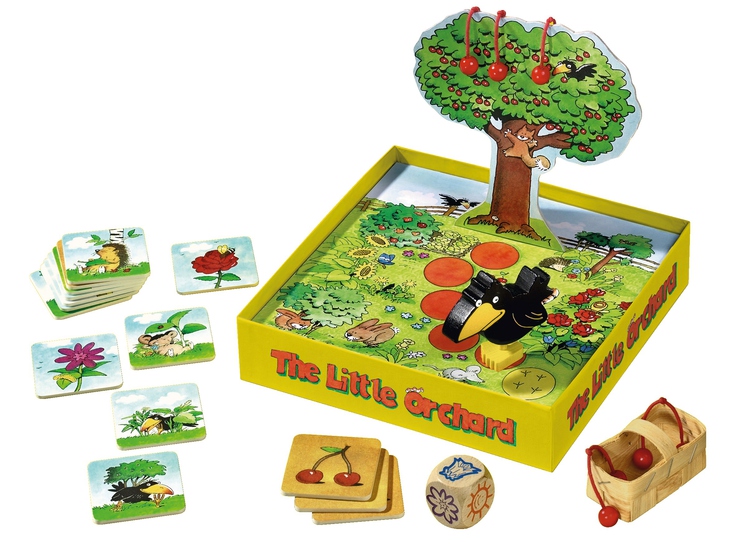
Take a few objects (doll, soft toy, ball, block, etc.) and arrange them randomly. Ask the child to remember which toys he saw and look away.
Swap them or take one and ask what has changed. Tasks can be complicated when the baby has a little practice.
Suitable for age: 4-7 years old.
19. Didactic games
Suitable for studying mathematical and geometric concepts, natural phenomena and the world around. With the help of pictures cut out from old magazines or printed on a printer, you can help baby animals find their mother (for example, make pairs of chicken-chicken, sheep-lamb, etc.).
Geometric shapes cut out of colored paper will help you repeat colors and practice counting, while circles cut into segments will introduce you to the parts of the whole.
The process of preparing such material will be no less interesting and creative than the lessons themselves.
Suitable for age: 4-8 years old.
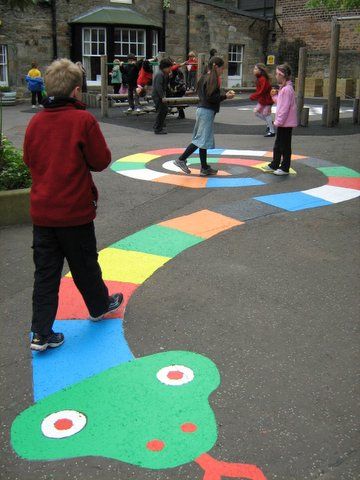
Speech games
The development of speech is an important and necessary process. Talk to your child on the way home, in the car, look at the pictures together. Cognitive games can be organized at home with children and in a simple conversation, the main thing is to show a little imagination.
20. Write a story
Some children's games are aimed at the development of imagination, and they should not be neglected. And to begin with, try to come up with a story that will be based on just two words. At the same time, they do not have to be combined in meaning. For example, ask one word from your dad (mother), the second - from your sister (brother). Look what a funny story you can make!
Suitable for age: 5-8 years old.
21. Who and what
By asking simple questions, this game can be played both with a child and with a group of children. Tasks can be as follows:
- Who (what) is swimming?
- Who (what) walks?
- Who's talking?
- What can you eat?
- What can be cooked?
- Who (what) can fly? Etc.

There should be as many answers as possible. If there are many participants, there will be a competition.
Suitable for age: 5-7 years old.
Construction of houses
Needless to say, how children love to build things? Moreover, it does not matter at all whether it is an expensive designer, wooden blocks left after repair, shoe boxes or an umbrella and a blanket - the process is always captivating.
Although, as practice shows, unnecessary boxes or a covered chair usually win in terms of popularity.
- A selection of hotels for families
22. Constructors
In any home there are small Lego parts or a box with wooden towers, arches and blocks of different sizes.
Offer a bored child to build a home for his favorite toy: a little man, a doll, a bear, etc. you can go beyond walls and build simple furniture and celebrate the move.
Suitable for age: 5-8 years old.
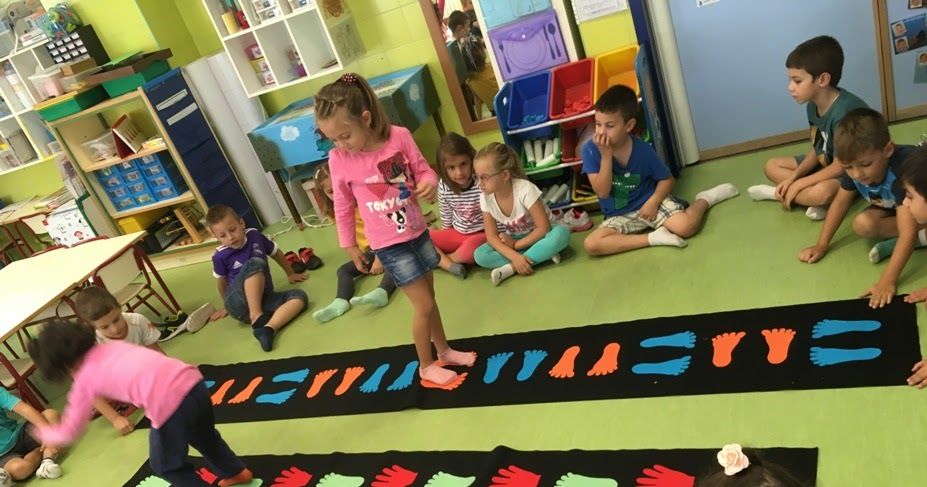
23. Cardboard boxes
It happens that shoe boxes have accumulated or a large package of household appliances has appeared. Then the house can be built for dolls (for boys - a garage or parking lot) or for a baby.
Such structures can be pasted over, decorated, filled with furniture - in general, playing with them will captivate young architects and designers for more than one day.
Suitable for age: 6-10 years old.
24. Armchairs, blankets and umbrellas
The good old version of “housing”, inexplicably of interest to all generations of children without exception. A bedspread or a blanket can be put on the table, fixed with books, two chairs can be covered with it, or something similar can be built using an ordinary umbrella.
Fantasy begins to manifest itself instantly, and sofa cushions, blankets and other improvised means are used. True, after such a game you will have to spend some time cleaning.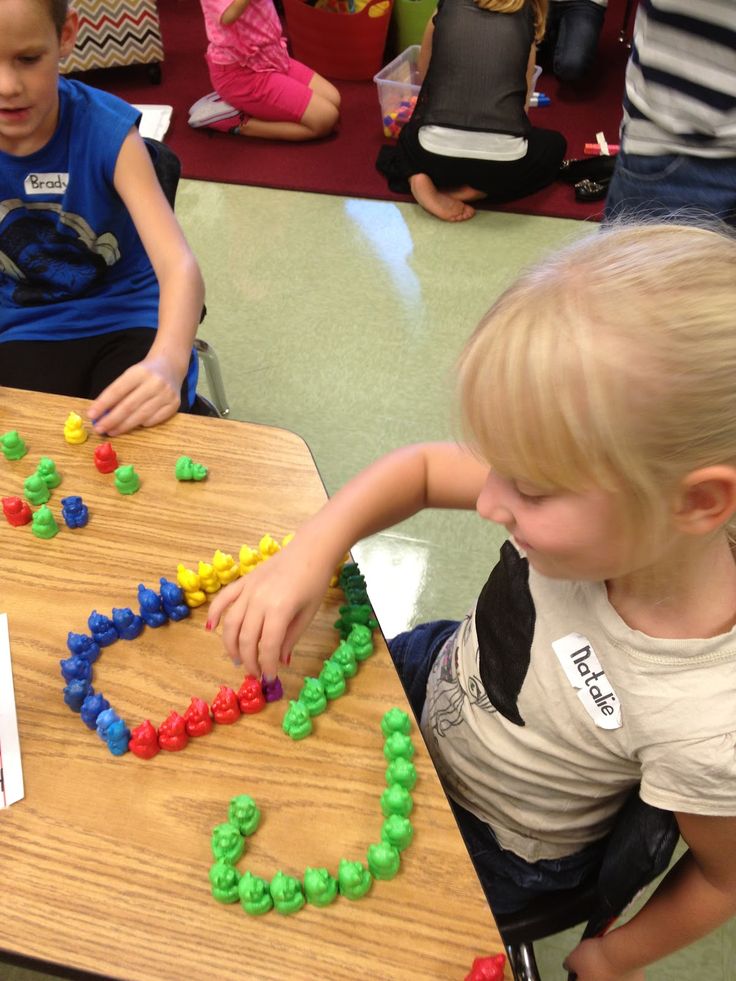
Suitable for age: 4-8 years old.
Math games
Don't you think that mathematics is a boring science? Wrong opinion. Usually children like to count, add and subtract, play with geometric shapes. The main thing is to interest them and not turn the game into a long annoying task.
- Best resorts for families with children
25. Mathematics in the kitchen
Setting the table is a great way for your little one to practice counting. Ask him to put two forks on the table, bring three cups, take five apples from the basket, or put four cookies on the plate.
Get creative with addition and subtraction using teaspoons, large pasta, or other household tools.
Suitable for age: 4-6 years old.
26. Tasty Numbers
Bake number cookies together. Prepare the dough, let the child roll out the sausages, and you help to add them in the form of numbers.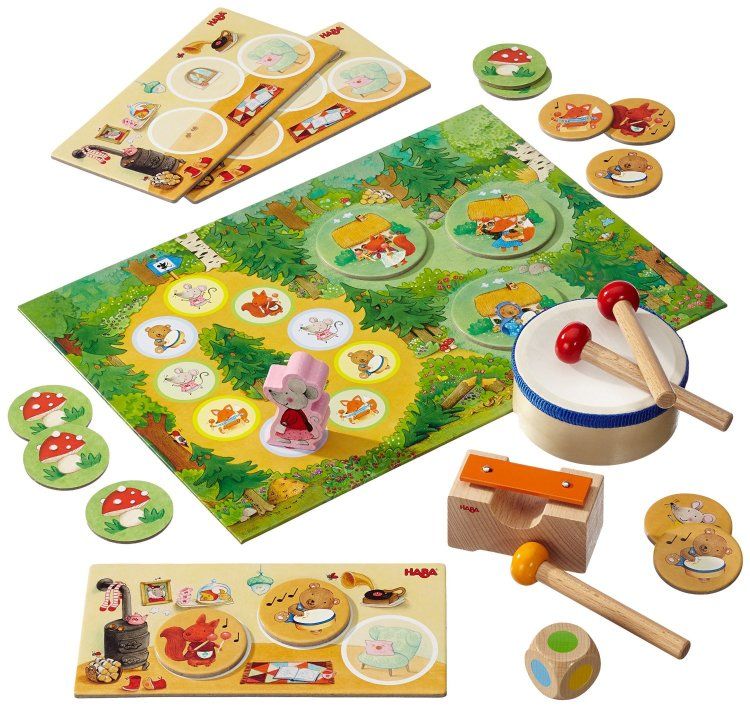
You can play with them, build pyramids, stack them up and down, and even make simple examples. It's not scary if a couple of signs suddenly disappear imperceptibly - after all, this is a cookie.
Alternatively, math pastries can also be made inedible. Blind such numbers from salt dough, dry and decorate them, and then open them with varnish. Spreading examples from this counting material will be especially nice.
Suitable for age: 4-6 years old.
27. Math ball
The ball can be played even within the same room without damaging neighbors or surrounding furniture. Repeat verbal counting with your child.
When throwing the ball to him, name an example, and he, throwing the ball to you, must say the answer. Depending on age, you can take numbers from the first ten, second or three-digit. The main thing is to have time to count yourself in order to check the correctness of the answer.
The variant of the ball game can be like this.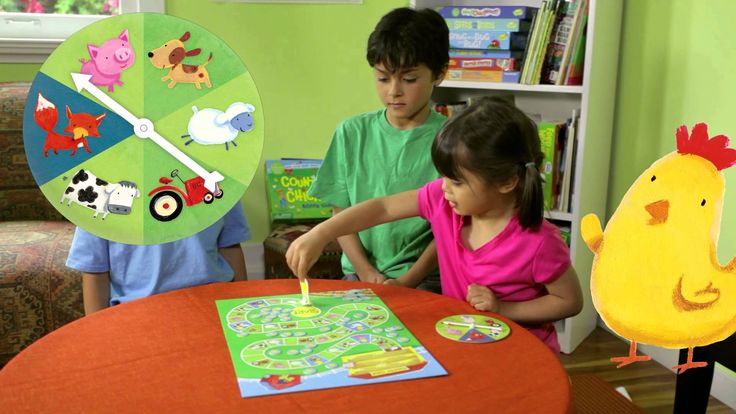 When throwing the ball to a child, name the number, and in response he must name adjacent numbers (5 more, 10 less, half as much, etc., depending on age and knowledge).
When throwing the ball to a child, name the number, and in response he must name adjacent numbers (5 more, 10 less, half as much, etc., depending on age and knowledge).
Suitable for age: 5-8 years old.
Interesting games for two children
Children often only need to be prompted to play, and they will perfectly play with each other, mostly without paying attention to the difference in age.
Calm games at home can be very different, the main thing is that they are interesting for children.
28. Wonder Beast
All you need is a piece of paper and a pen. The first player draws a head and folds the sheet so that only the neck is visible.
The second one completes the torso, then again the first one draws the legs (paws, flippers, etc.). Expanding the "picture", the children will see a rather funny creature that you can think of a name for.
Suitable for age: 6-10 years old.

29. Funny stories
A similar activity can be a variant of the game on paper, when children need to play with each other or with adults. The first participant must write two lines from a song, a poem or just two sentences related in meaning, and wrap a sheet of paper, leaving only the last phrase.
The next one writes two of his own lines, connecting them in meaning with the previous phrase, and again wraps the sheet. As a result, the bundle will hide a very curious and, most likely, funny story.
Suitable for age: 8-14 years old.
Role-playing games
Children's games, in which children pretend to be adults, are perhaps the most favorite.
From an early age, a child begins to imitate his parents: lovingly puts his favorite toys to bed, builds a garage, cooks food on a toy stove, or builds a semblance of a real store. Play along with the child or switch roles with him, allowing him to become a mom, dad, salesman or doctor.
30. Shop
There are several variants of this game. You can lay out items on the "counter", set "price tags" and make "money" from cut sheets of paper of different sizes, thereby repeating the count.
Or you can ask the child not to name the product he wants to buy, but only to give him a description. So the game will become a small lesson in the development of speech.
Suitable for age: 4-6 years old.
31. Beauty salon
A role-playing game that captivates absolutely all girls. You can become a model for your child to do hair, make-up, and manicures.
But a doll can also act as a “client” of the salon. At the same time, be sure to discuss the rules of conduct and the culture of communication in the salon.
Suitable for age: 5-7 years old.
32. Construction site
You can organize the activities of both the driver and the builder at the same time by showing your son that a big car can be loaded with blocks, help it get to the construction site, unload the “material” and start building a garage or house.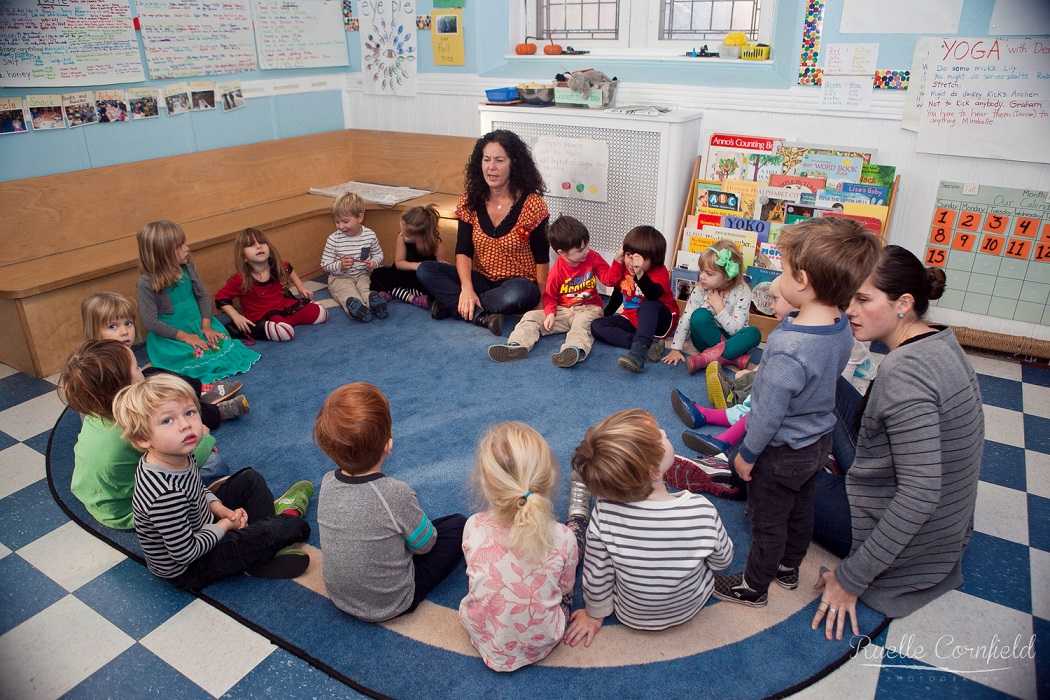
You can also include a crane, "worker" figures and build more than one object.
Suitable for age: 4-6 years old.
33. Playing Pirates
Build a ship from improvised means, and look for costume parts in the closet - the preparation process will be no less interesting.
Then, armed with binoculars, you can go in search of treasures to uncharted shores. Alternatively, a small toy man can become a pirate, and a ship can be built from a designer. Depends on what the child likes more.
Suitable for age: 5-8 years old.
Unusual home games
Family games at home can become a good tradition that will give your children a lot of warm memories in adulthood. In the meantime, they are still small, a little imagination, effort and time will help organize fun games and occupy the leisure of the whole family. Get actively involved in the preparation, do not be lazy, think of what you can play, and you will not notice how you will get carried away yourself.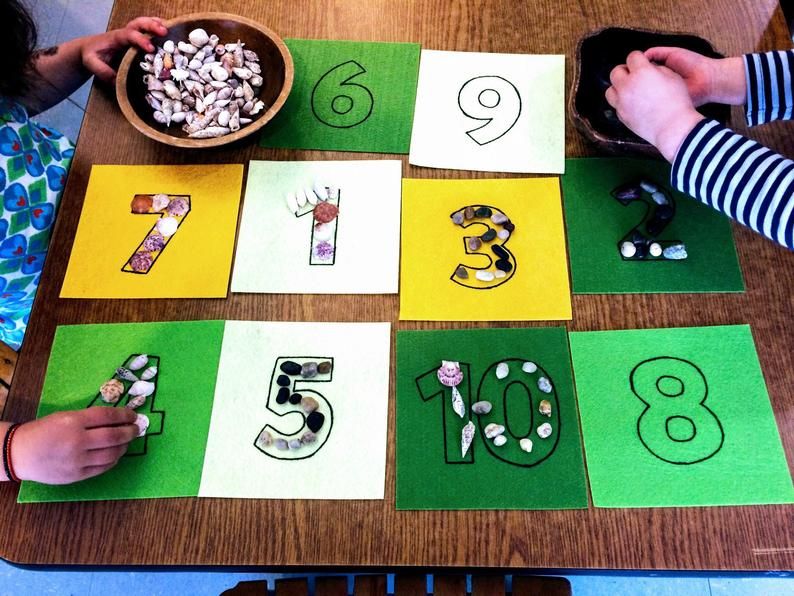
34. Fantastic patterns
Mix 5 tablespoons of gouache, one of shampoo (dishwashing liquid) and a teaspoon of water. Make a thick foam in the container by blowing into a plastic tube.
Now lightly touch the colored bubbles with a piece of paper. See how the prints turn out, and paint an abstract picture, following your imagination.
Suitable for age: 5-12 years old.
35. Cheerful quest
This activity can be prepared for a birthday or for a group of friends, or you can just please your child with an exciting activity. And if the treasure hunter is interested in the search process, then, believe me, the preparation process will be no less fascinated.
Hide a small gift or sweet prize (there may be more than one) at home and write step-by-step instructions on how to find it.
You can place notes with clues in the most unusual places, the main thing is that each previous one should be the key to finding the next one and eventually lead to the main “treasure”.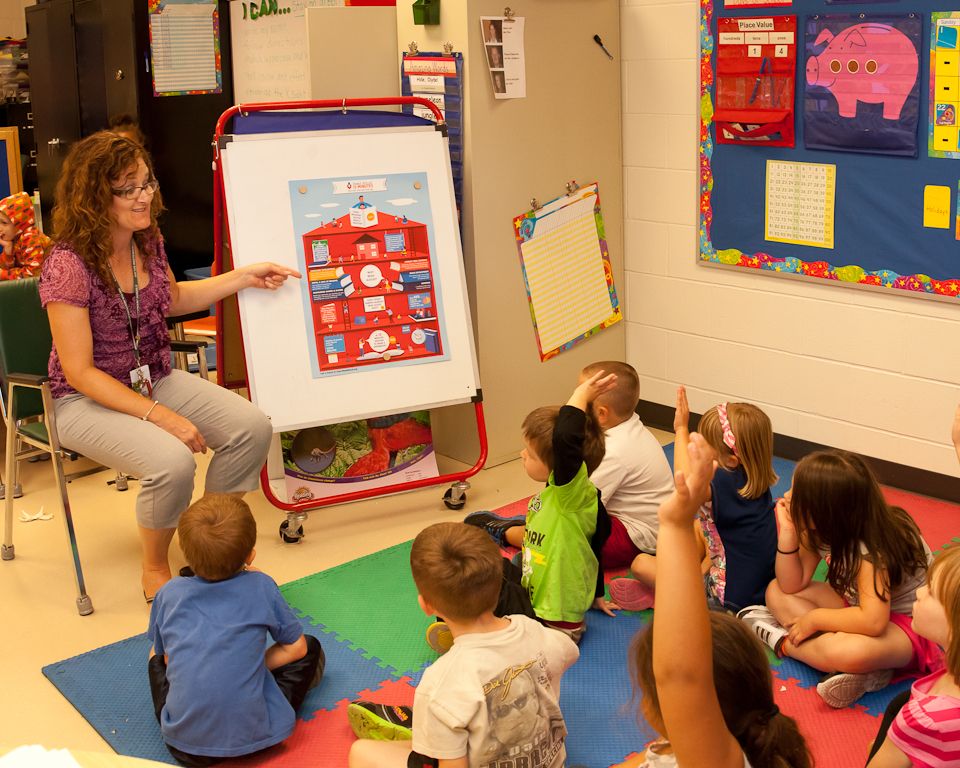
Suitable for age: 6-12 years old.
Music games
Every child has favorite songs, regardless of age. You can just dance, learn new moves or prepare a dance as a gift.
Joint games of children at home unite, and music will help recharge with positive and good mood.
36. Leg, leg!
Have you ever danced with your neck? What about a nose or a finger? Well, there is a great opportunity to try! Turn on your favorite tune and start with simple movements.
Ask the children to dance with only their hands or only their feet. Then move on to more difficult tasks: dance only with your elbow or finger. And don't forget: you, too, must be actively involved in the game.
37. Get rid of the balls
For this game you will need a low stretched volleyball net. But as an option, any dividing line in the house is also suitable. Inflate 6 - 10 balloons, depending on the number of players.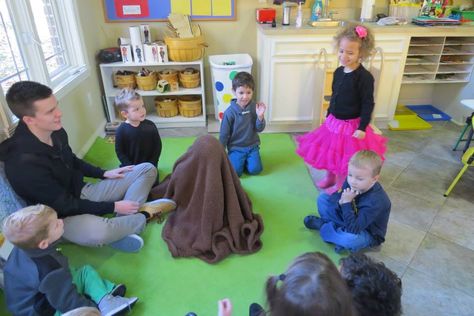
The task of two teams (they can have from 1 to 3-4 participants), having received the balls equally, transfer them to the opponent's side.
The game starts when the music is turned on and stops when the music is turned off. Whichever side has fewer balls at that moment wins.
Water games
Children love to splash in the water, bathe and pour water from container to container.
If you decide to use water as a play area, be prepared for the environment to be wet and your baby's clothes and shoes to become damp. Therefore, be prepared for the fact that at the end of the game you will need to completely change your clothes.
- Best Family Fun
38. Catch, fish!
Prepare a bowl or bowl of water, take a few small items and put them directly into the water. These can be balls, small figures, chestnuts, etc.
Invite the child to catch the “fish” with his hands, a spoon, a small net (a small kitchen sieve can act as this), and then carefully place them in a nearby container.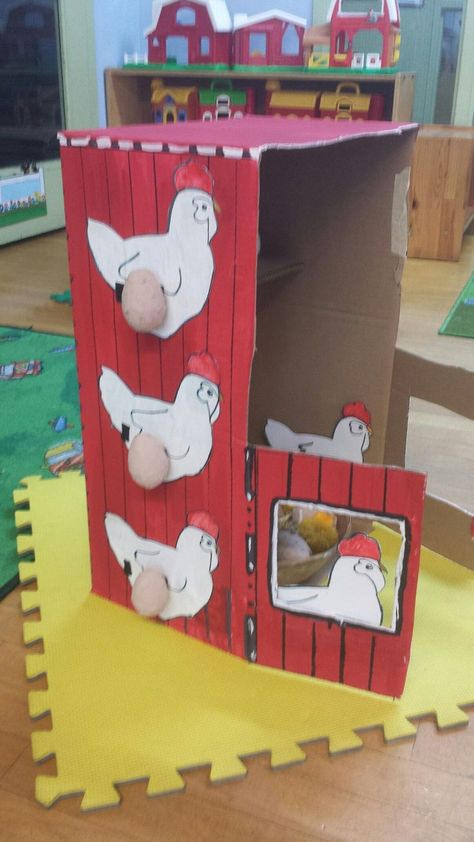
Suitable for age: 3-5 years old.
39. SpongeBob
Tell your child that a sponge can absorb water and show how it works.
Prepare two containers, fill one of them with water. Try transferring water from one container to another with a sponge, filling it up and then squeezing it out.
Suitable for age: 3-4 years.
40. Catch the ball!
When your baby goes for a bath, drop about ten lightly inflated balloons into the bath with him.
They will funny jump out from under the water, float like boats if you blow on them, and will be a wonderful field for experiments of a little researcher.
Suitable for age: 3-5 years old.
Interesting games
What other games are there for children at home? Choose according to the mood and preference of the child.
They can be active or calm, with a lot of additional materials or in the form of a conversation, but in any case they should be interesting to the child. As practice shows, games without a phone can also captivate and interest a child.
As practice shows, games without a phone can also captivate and interest a child.
41. Guess what it is
We explore the world around us with the help of the senses, and touch plays an important role in this. Therefore, it will be useful for a child to mentally create images of things without seeing them, but only by touching them.
Place several objects in a basket or container out of sight, then give one to each child's hands while blindfolded (or simply cover them).
Let the baby try to guess what he is holding in his hands, examining the object only with his fingers. Tell me if the child is not coping.
Suitable for age: 4-7 years old.
42. Unusual book
Games and activities with children at home can be remembered not only as an interesting pastime with parents, but also as an interesting craft that has been preserved for many years. You can make a book with your child about himself.
Collect photographs, magazine clippings, interesting small items.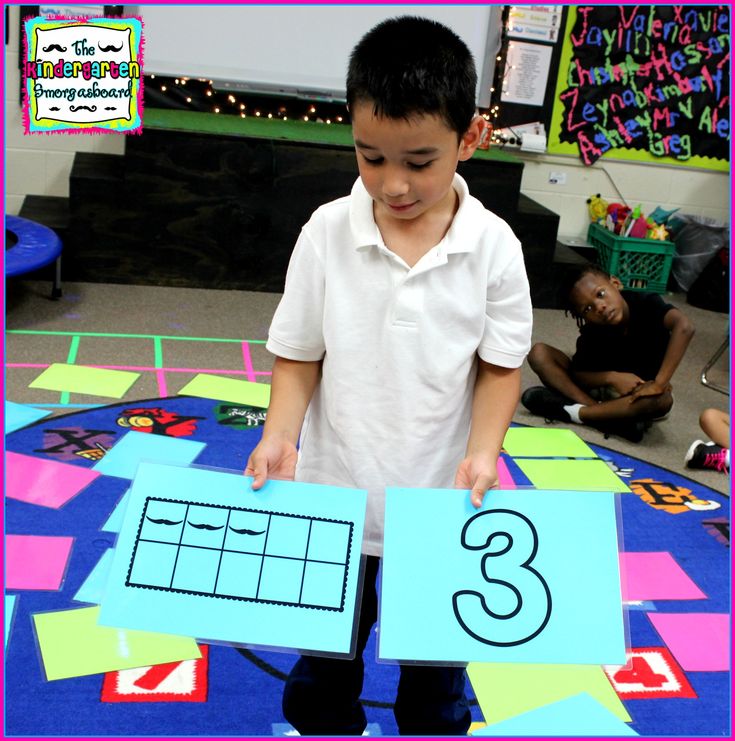 They can be glued onto thick sheets of paper and write a story together.
They can be glued onto thick sheets of paper and write a story together.
Have your child write the first letter in this book, make the first drawing, circle their pen, or paste a picture they like. After many years, such a craft will evoke very fond memories.
Alternatively, you can make a fairy tale book by inventing a story and decorating it with applications and drawings. The process will take more than one evening and, most likely, will interest the child for a long time.
Suitable for age: 4-10 years old.
Advice to parents
When spending time with your child, do not be afraid to show your imagination, use any household items for play, talk about the world around you, let the baby try on different roles, dance, jump, get his hands dirty in paint or wet clothes with water. So he learns the world, develops and grows.
Remember that your participation in the gameplay is important, but only as a partner, less so as a mentor.
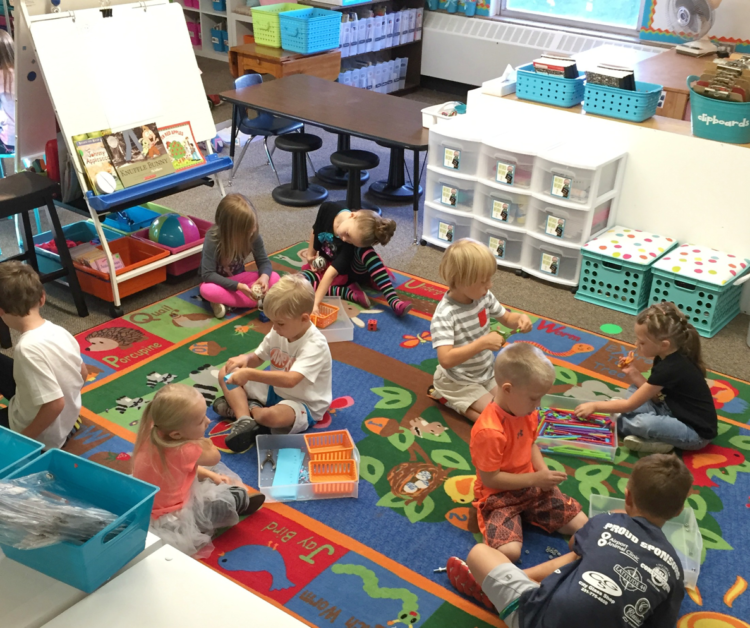
Take a break from everyday activities, spend more time making cookies or cleaning, but do it together with your child while playing.
- Things to do with kids at home: 35 fun ideas for fun
A wise Polish proverb says: "You have a whole life to work, and children will be small only once." Use this time as much as possible, and the useful habit of seeing a friend in a parent will remain forever.
We hope that our advice will be useful to you in organizing your leisure time, and you will always find something to captivate your child at home.
33 educational and entertaining games
At the age of six, many children enter the first grade or prepare for this important stage in their lives. However, despite the fact that kindergarten is a thing of the past, six-year-olds still remain children, and play remains the dominant activity for them.
Games with a child of 6 years old can be aimed at developing thinking, attention, imagination, cognitive abilities or physical data (dexterity, endurance, coordination of movements).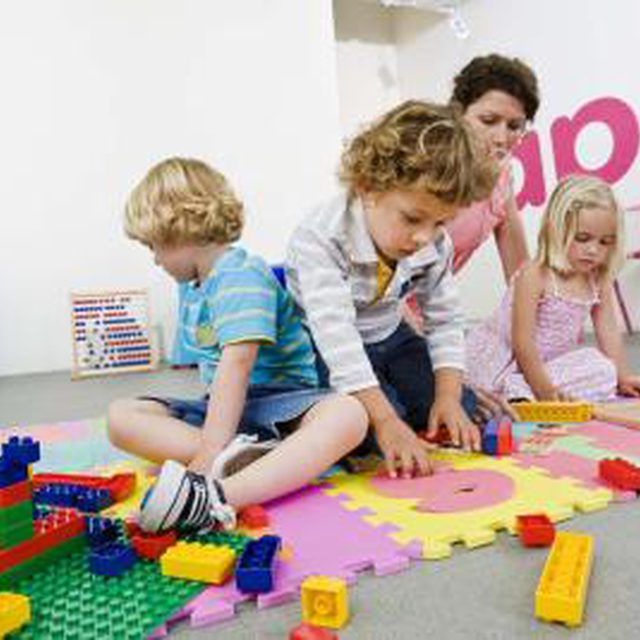 Games in English, outdoor games, psychological games, in a group or together - there are many options for parents and educators. Play is a wonderful method of learning and development, both at home and at school.
Games in English, outdoor games, psychological games, in a group or together - there are many options for parents and educators. Play is a wonderful method of learning and development, both at home and at school.
Today's children are increasingly choosing gadgets over real communication. The task of parents is to take away a tablet from their child and play games with it, for a child of 6 years old, such a joint pastime is extremely important: a six-year-old feels that he is loved, interested in him, parents delve into his problems and want to spend time with him. Parents themselves during the game can learn a lot about their baby, his thoughts and experiences. In addition, it is much easier to teach a child something new, presenting information in a playful way, and not forcing memorization.
Contents
- Games with a 6-year-old child at home together
- Games for children 6 years old at home
- Didactic games
- Music games
- Board games
- Games for a group of children aged 6
- Logic games
- Educational games
- Math games
- Christmas games
- Speech therapy games
- Attention Games
- Role play
- Outdoor games for children 6 years old
Games with a 6-year-old child at home together
Stayed at home with a child in quarantine or during school holidays and do not know what to do? Offer him interesting games that you can play together. As a rule, home games do not require special training and special equipment - ordinary household items and toys serve as props.
As a rule, home games do not require special training and special equipment - ordinary household items and toys serve as props.
1. "Pizzaiolo"
Props : two cardboard round blanks for future pizza, colored pencils, scissors, colored paper or an album.
Parent and child will compete to see who can make the fastest pizza. First you need to prepare the "ingredients". On a sheet of paper we draw cheese, sausage, tomatoes and other products that you want to add to your dish. You can cut them out of colored paper. All ingredients are drawn and cut out in duplicate, there should be an equal number of them.
Pizza preparations are placed on two stools, and all the ingredients are laid out in a far corner or even in another room. On a signal, the game begins: the participants run to the ingredients, take one part, come back, put it on the pizza - and so on until it is ready. Whoever finishes their dish the fastest wins.
Today in stores you can find a ready-made toy pizza set, where the products are molded onto a felt blank using Velcro.
You can also cook not pizza, but, for example, a cake or soup.
2. "Doll"
A very funny game that will make any bookie laugh. The child is a deflated doll. He, completely relaxed, sits on a chair, his arms hang down along his torso. The parent - the pump - puts a finger of one hand to the doll, and the other to his mouth, and begins to inflate the doll. You can make the corresponding sound “psh-psh-psh”. At the same time, the child begins to “puff up”. Suddenly, the pump is disconnected - and the doll deflates again, and maybe even starts to "fly" around the apartment, like a deflating balloon ... It's simply unrealistic to keep from laughing! In addition, this game teaches the child to feel his body, relax and strain its individual parts.
3. “When I was…”
Apartment dwellers cannot always afford to run and make noise, as they will disturb their neighbors. In this case, quiet games will come to the rescue. This entertainment perfectly develops imagination and fantasy.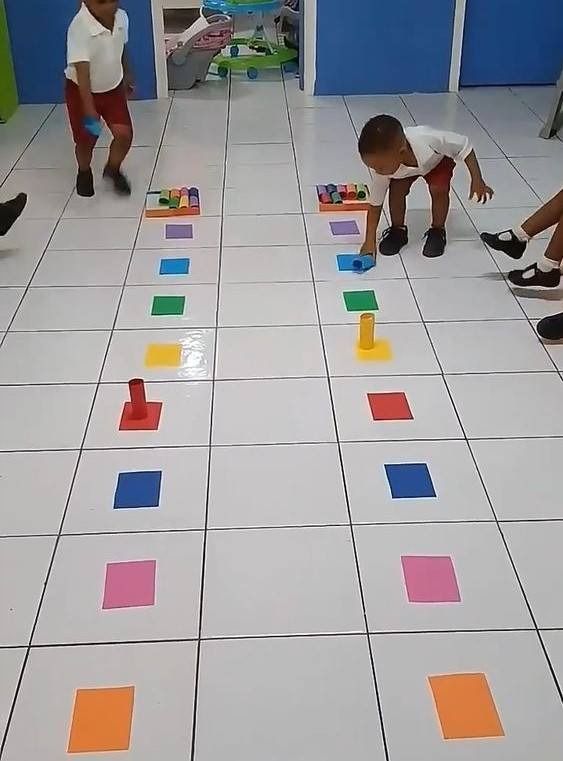 Invite the child to continue your phrases:
Invite the child to continue your phrases:
- when I was small, like an ant ...
- when I was flexible like an acrobat…
- when I was furry like a bear...
- when I was hungry like a pack of wolves…
In this way, together with the child, you can come up with a whole fairy tale story, write it down and supplement it with illustrations created together.
Games for children 6 years old at home
What to do at home with a child of 6 years old at home? Those who prefer calm games can play "Cities", "Sea Battle", "Tic-Tac-Toe" or do appliqué, modeling from plasticine, drawing. If the living space allows, then outdoor games are also available, such as pillow fights or soft ball football. So, what to play at home with a child of 6 years?
4. "Mirror"
The child plays the role of a mirror and must exactly repeat all the movements of the leader. The leader's task is to make his "reflection" laugh. If the facilitator manages to make the child laugh, then the players switch roles.
If the facilitator manages to make the child laugh, then the players switch roles.
5. "Obstacle race"
Props : "obstacles", long ribbon.
Obstacles are placed on the running route. Some you need to run around, some you need to jump over, and some you need to crawl under. Obstacles can be ordinary toys and chairs. Particularly creative parents can comment on the route: “Be careful! On the right is fiery lava, look not to fall into the very mouth of the volcano! bumps! etc. The tape is needed in order to mark the finish, as they do in sports marathons.
Didactic games
Educational games should be used not only in schools, but also at home, because at the age of six children absorb new material like a sponge. This is the best age for cognitive development and learning.
6. "What's wrong?"
A game that develops attentiveness, logical thinking, memory and auditory perception. The rules are quite simple: the facilitator reads the poem twice, and then the children must remember what is wrong in it:
- Is it true or not that snow is black like soot,
- Sugar is bitter, coal is white, but a coward, like a hare, dare?
- That a cancer can fly, and a bear can dance a master?
- That pears grow on willows, that whales live on land,
- That mowers cut down pine trees from dawn to dusk?
- Well, squirrels love bumps, and lazy people love work,
- Don't boys and girls take cakes in their mouths?
7.
 “What will I put in my briefcase”
“What will I put in my briefcase” Props : briefcase, various things, some of which relate to the educational process, and some do not.
From the items laid out, the child needs to choose which ones are needed for schooling and which ones are not. School supplies need to be sent to the backpack and at the same time tell what the student will do with this or that thing.
You can play similar educational games, but on the theme of a hospital, a hike, a vacation at sea, a desert island. Such games bring up accuracy, organization, develop thinking.
Music games
What six year old doesn't like to sing and dance? In particular, any hyperactive child will be delighted with musical games, because this is a great opportunity to throw out all their energy and show their creative abilities.
8. “Who is singing this?”
Props : recording of songs from cartoons and children's fairy tales.
Classic quiz. It is desirable that there are several participants or two teams - six-year-olds love the spirit of competition and enthusiastically perceive any competition. The host turns on the song, the children need to guess the artist. For each correct answer, the participant or his team receives a chip. The team with the most correct answers wins.
9. "Improvisation"
Almost all dance games have the same goals - to charge with positive energy and warm up. This fun game is no exception. The facilitator turns on a catchy melody for the children and gives tasks - to dance like kittens, penguins, kangaroos, caterpillars, bears, etc.
Board games
Many families simply love entertaining board games, because you can spend more than one hour or even the whole evening playing Monopoly or Scrabble. During the game, the child learns to interact with other participants, as well as to perceive defeat correctly. In addition, board games develop tactile and visual perception.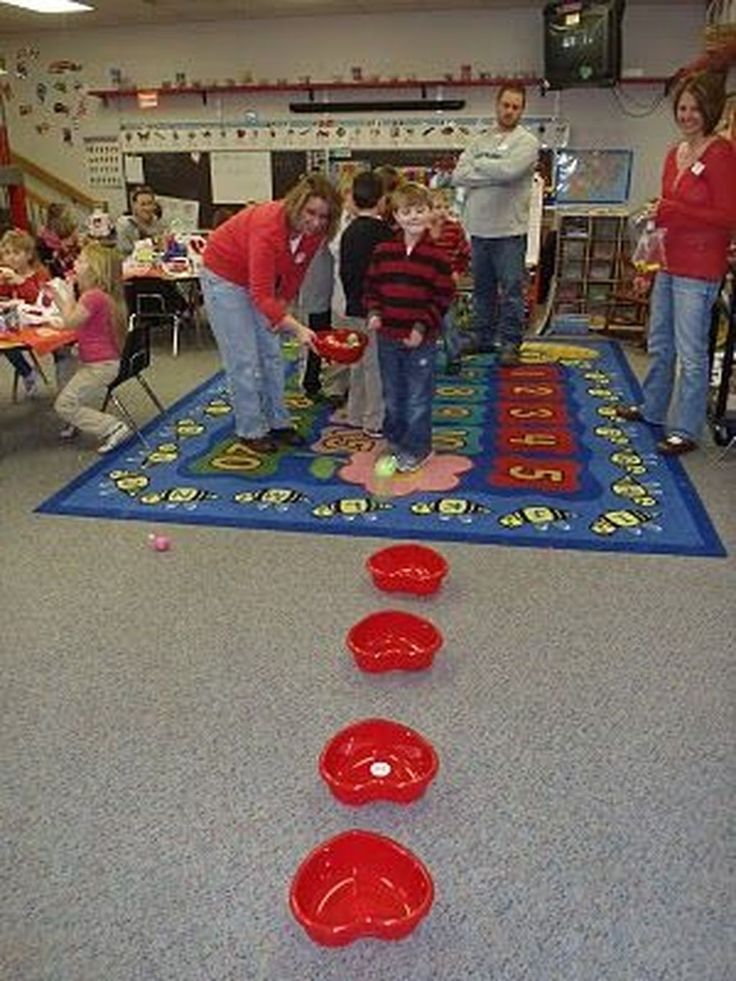
You can buy a ready-made board game - today there is a huge assortment of such goods in stores, or you can make it yourself by drawing a playing field on a Whatman paper.
10. “Secrets and riddles…” (substitute the name of either your city or a fictitious country)
Props : drawing paper, colored pencils and felt-tip pens, scissors, chips, a cube.
Draw a playing field on paper. There may be a separate place for your apartment, kindergarten or school, playground, shops - in general, all places familiar to the child, which he often visits. Tasks are assigned for each location. For example, a player rolls a die and ends up on the “School” field, then he needs to solve an example, read a poem, etc. If he gets to the “Sports Ground”, then the tasks will be appropriate - perform five squats or push-ups.
- Board games for the whole family
- DIY board games for children
11.
 Magic ball
Magic ball Props : box, cocktail straws, small ball, markers.
In the box, draw a labyrinth with a simple pencil, then add volume to it with the help of plastic tubes - just glue the straws on top along the drawn contour. At the finish line, we draw a princess that needs to be saved - deliver a magic ball (our little ball) to her as quickly as possible. We set the ball at the start, after which we try to direct it to the finish line through the maze by tilting the box in different directions.
Games for a group of children aged 6
Group games are extremely important for the formation of a child's personality. Moreover, they help to organize leisure. If a group of six-year-olds is not offered a game, if their activity is not directed in a certain direction, then small active naughty ones may well cause chaos. Collective games can be of an intellectual or sports orientation, children really like relay races, recently the quest has been very popular.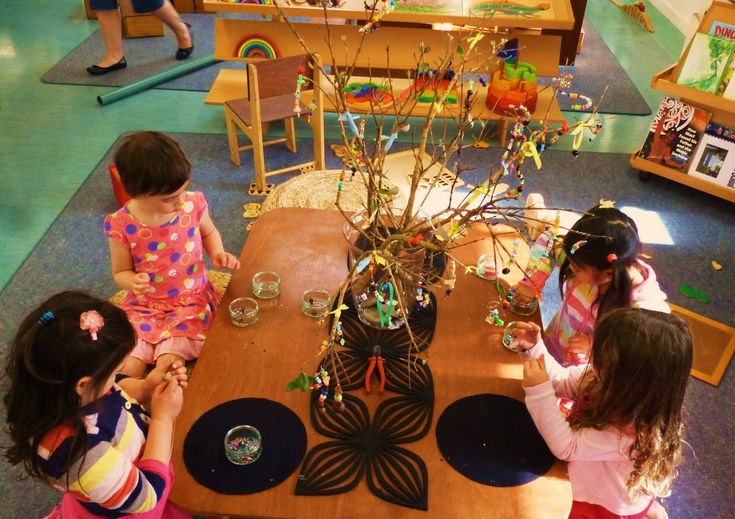
12. "Homeless Hare"
A hare and a hunter are selected. All other players - also hares - draw a circle for themselves, which is considered their house. On a signal, the hunter starts chasing the hare, the hare can hide in one of the "houses", but then the owner of this circle must go out and act as a new target for the hunter. Thus, several hares can change. If the hunter grabbed the hare, then the latter himself becomes the hunter.
13. "Feet from the ground" (the floor is lava)
Lead and water are selected. All other players on the command "Feet off the ground!" should jump to some kind of elevation. Those who remained on the ground run away from the water. The caught player is out of the game. The game continues until one player remains.
Logic games
Games for the development of logical thinking, as a rule, are calm, not mobile. Many elementary school students even have a special subject "Logic", where they solve problems, play associations, solve logic puzzles and riddles, and participate in thematic quizzes.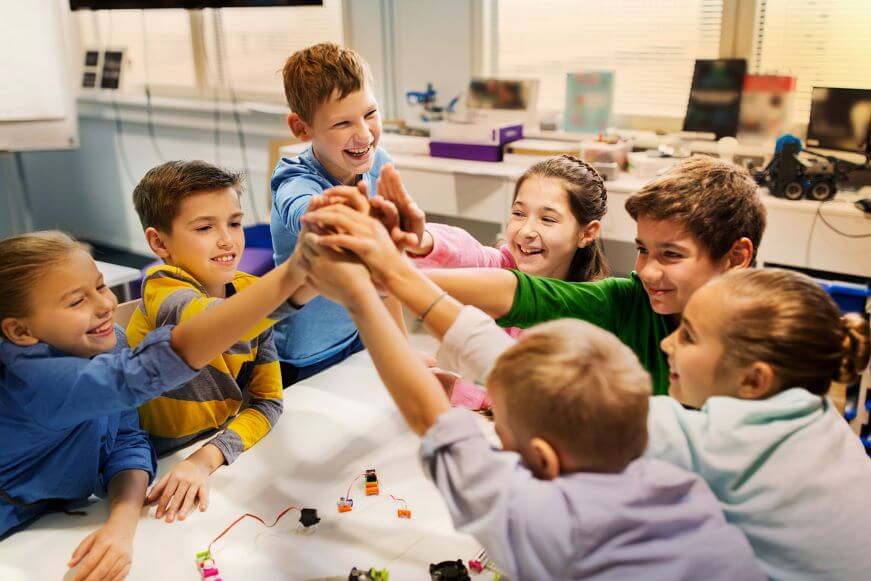
14. “Guess whose house”
Props : toys or images of a hare, a fox and a bear, three houses of different colors, sizes and with certain distinctive features.
The facilitator reads tasks to the children that will help determine which of the animals lives in which house:
“The hare's house is neither yellow nor blue, but the bear's house is neither blue nor white. What color are the animals' houses?
“Every winter, the bear prepared firewood. Every spring, the fox picked beautiful wildflowers. Every summer the hare prepared food supplies. Find animal houses according to these clues ”(the bear has a house with a chimney, the fox has a vase with a bouquet on the window, and the hare has a garden in front of the porch).
15. "Spread the birds into nests"
Props : images of birds and three nests (drawn or toy).
The task of the child is to settle the birds in a certain way. Birds are domestic, wild and migratory.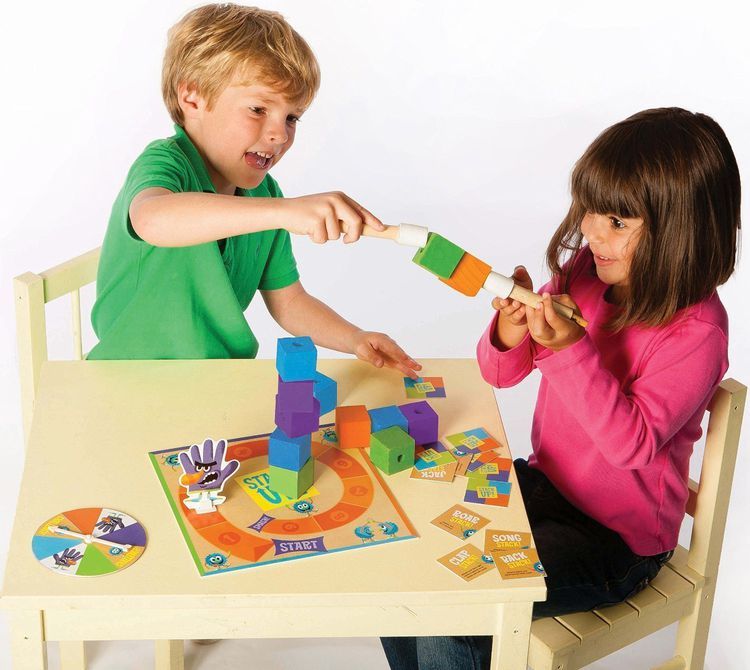 Ask to move all domestic birds to one nest, all birds with white plumage to another, waterfowl to the third, etc. What birds were left without a house? Which bird could live in two nests at once?
Ask to move all domestic birds to one nest, all birds with white plumage to another, waterfowl to the third, etc. What birds were left without a house? Which bird could live in two nests at once?
Educational games
Six-year-olds have just begun to get out of the age of how-tos, so they continue to bombard their parents with questions about the world around them. Preschoolers and first-graders are interested in literally everything: from natural phenomena to the animal world. Children 6 years old will love games about dinosaurs, space, the world around them, seasons, ocean inhabitants and more.
16. "Archimedes"
As you know, Archimedes exclaimed "Eureka!" when he was able to solve an extremely difficult problem. Invite the child to also solve some riddle that humanity has been struggling with for a long time. For example, “Why did dinosaurs die out and how could this be avoided?”, “Why do people live only on Earth? What needs to be done to populate other planets?”, “How to recognize an alien?”, “How to make an elephant out of a fly?”, “How to learn the language of animals?” and others.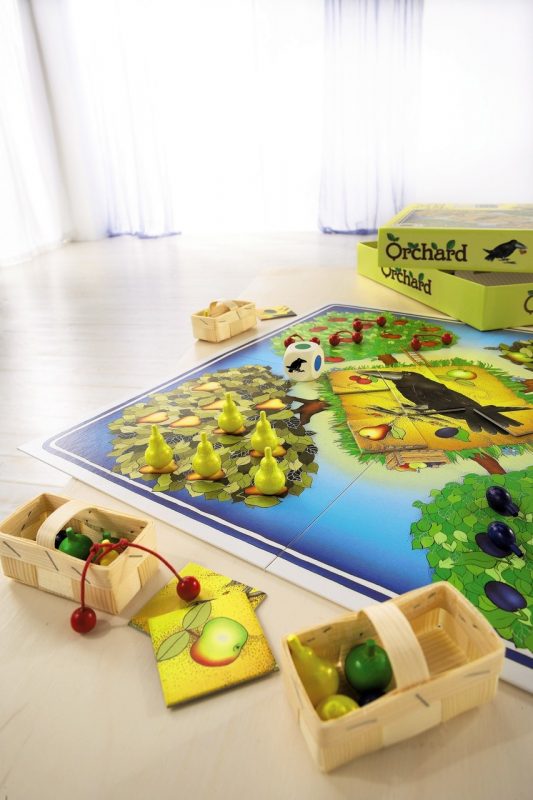
The facilitator asks questions like this, and as soon as one of the participants comes up with an answer, he shouts “Eureka!” - and answers.
17. "Seasons"
Props : playing field divided into four sectors by seasons, cards with images of characteristic phenomena (flowers, snow, green meadow, yellow leaves, etc.), separate cards for each season .
The game can be played in several stages. For example, children are required to divide the cards into the appropriate sectors and explain why they made this choice. Next, the host calls the month, the child raises the card of the season to which the named month belongs. You can also turn on the sounds characteristic of each season (wind noise, New Year's motifs, spring drops, buzzing insects).
Math games
Games are not only fun and entertaining, but also useful. So, mathematical tasks are extremely important for first-graders, as they help to better assimilate school material, learn to count within a hundred, and perform simple addition and subtraction operations.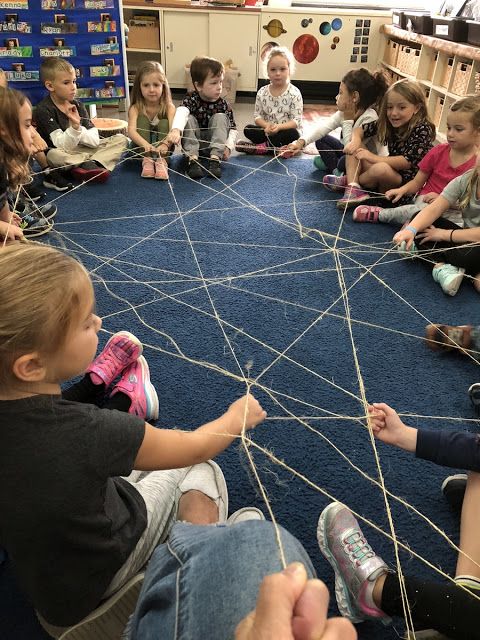
18. "Postman"
Props : three houses or mailboxes, each of which has its own number, letters (an example is indicated on each letter).
The child will try himself as a postman who needs to deliver letters to the addressees. But in order to find out in which mailbox the letter should be dropped, the postman will need to solve examples. For example, 5 + 2 = 7, which means that you should choose a box or a house at number 7.
19. "Count and cross out"
Props : cards, pen.
The child receives cards with pictures: a tree with three apples, a clearing with four flowers, an aquarium with one fish, etc. The facilitator reads out the tasks: “There are two apples on the tree, take one away”, “There is one fish in the aquarium, add two more ". The child should also be explained why the number of these items could have changed: an apple could have fallen or been plucked, two fish could have been bought at a pet store.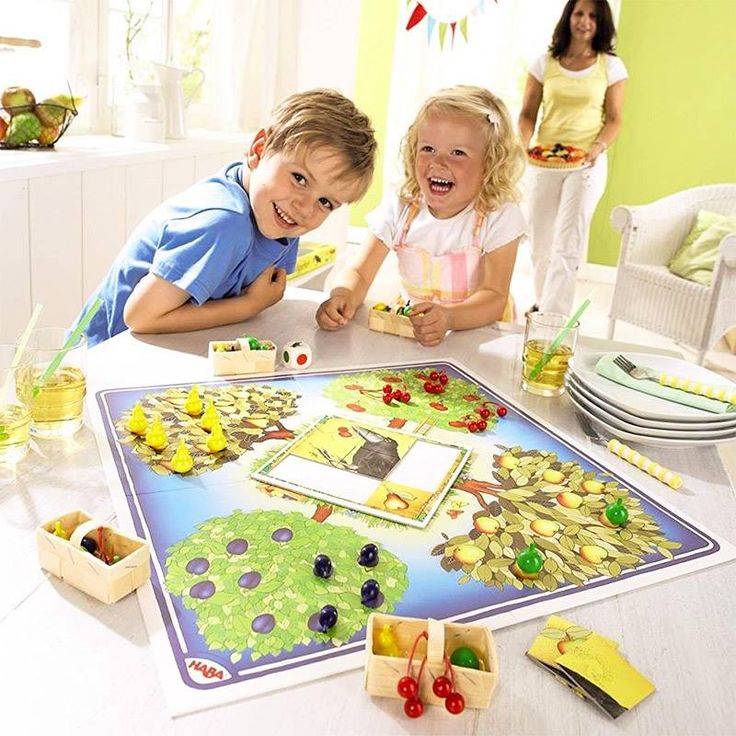
Christmas games
Despite the fact that many six-year-olds already go to school, they still continue to be small children who believe in magic and wait for a miracle with all their hearts, for example, the visit of Santa Claus on New Year's Eve.
The eve of the New Year is the time for morning performances and entertainment. Parents, educators and teachers need to know several games and competitions in order to give children real fun and charge the children with a good mood.
- Children's Christmas games: how to have fun on the most magical night of the year
20. Lost Nose
Props : whatman paper with a picture of a snowman, a carrot nose cut out of cardboard, orange plasticine, push pins or glue.
The host says that the Snowman came to the party, but he got ready so fast that he forgot his nose at home. The task of the guys is to put the guest in order. The child is blindfolded, and he must blindly attach the nose to the drawn snowman (or glue / pin it with a paper button, or mold it from plasticine).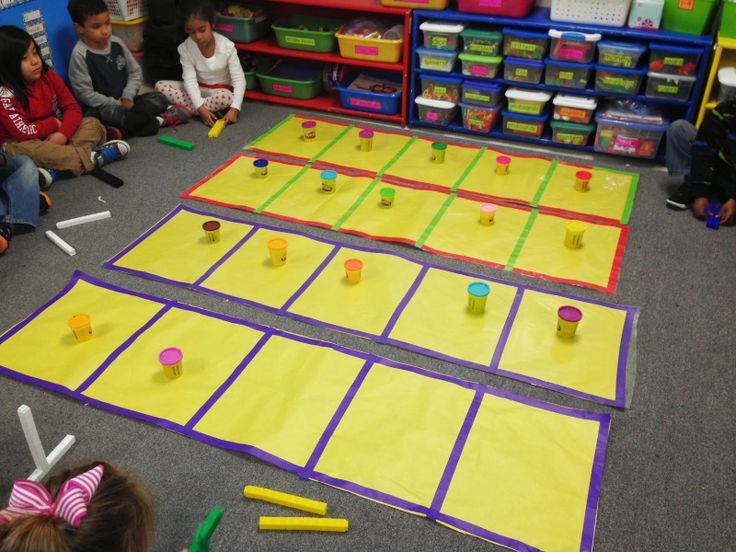 You can complicate the task and draw a snowman without other elements inherent in it (buckets on the head, arms, branches, a scarf, etc.).
You can complicate the task and draw a snowman without other elements inherent in it (buckets on the head, arms, branches, a scarf, etc.).
21. "Snowstorm"
Props : cotton ball, "rain".
This entertainment can be classified as "games at the table", as it does not require special activity. Children are divided into two teams (you can play together). The table is divided by "rain" or any other "border" into two equal parts. A snowball made of cotton wool is placed in the middle. On command, both participants begin to blow on the snowball, each from their own side. The player's task is to throw a snowball to the opponent's side.
22. "Race in bags"
Props: two large New Year's bags.
A classic relay race in which two teams compete. Children are built in two lines. The first participants are given bags where they need to climb with their feet. The task of the child is to jump to the finish line and back as quickly as possible and pass the baton to the next player.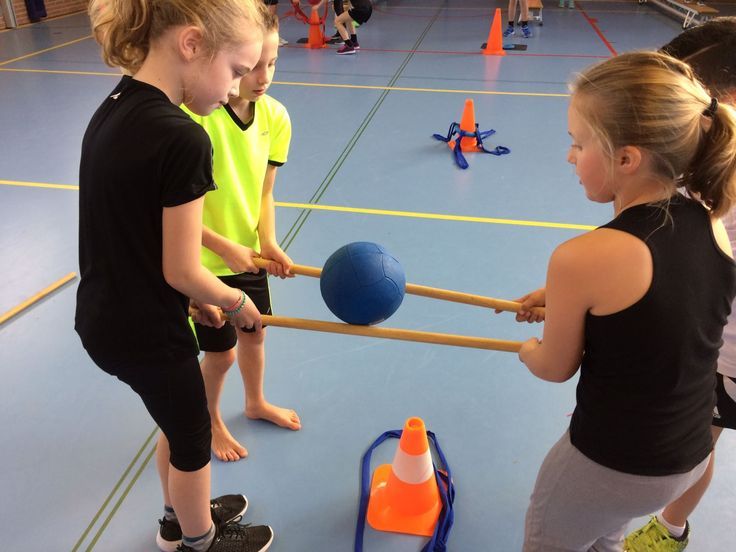 As usual, the team that finishes the relay first wins.
As usual, the team that finishes the relay first wins.
Speech therapy games
Not all six-year-olds can boast of clear speech. At this age, many children still do not pronounce some sounds: in one case, the missing milk teeth are to blame, in the other, anatomical problems, in the third, psychological features. Whatever the reason, you need to eliminate it as soon as possible.
First of all, beautiful clear speech is a visiting card of a person. Agree, it is always a pleasure to listen to professional speakers and announcers with a well-trained voice. Secondly, classmates can make fun of the child's speech defects, which in the future is fraught with complexes. Thirdly, speech is directly related to thinking: the more correctly a child speaks, the easier it is for him to form his thoughts, draw logical conclusions, with a poor vocabulary, it is difficult for a child to formulate his thoughts into words.
If speech problems are obvious and serious, then, of course, you need to contact a speech therapist.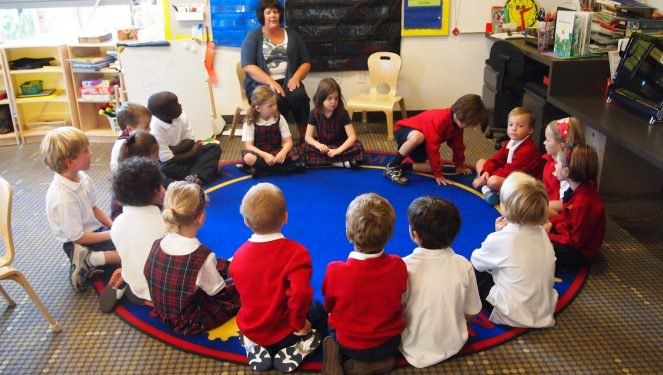 But parents can correct minor defects on their own, with the help of simple speech therapy games.
But parents can correct minor defects on their own, with the help of simple speech therapy games.
23. "Guess what's in the bag"
Props : a bag, a lot of small toys, for example from Kinder, and small items.
Word games can be aimed not only at correction, but also at the development of speech. This fun is one of those. The child puts his hand into the bag, gropes for one object and tries to describe it as accurately as possible. There are two options: either the parent / second player guesses, or the child himself. This game is also good because it develops fine motor skills.
24. "Stomp-clap"
Phonemic games are aimed at developing sound perception and analysis of oral speech. The stomp-clap game teaches children to recognize certain sounds while speaking. The facilitator sets a sound or syllable, after which he begins to read a poem or story. The child should stomp every time he hears the desired sound or syllable. In this way, you can also learn pairs of “deaf and sonorous”, “hard and soft”.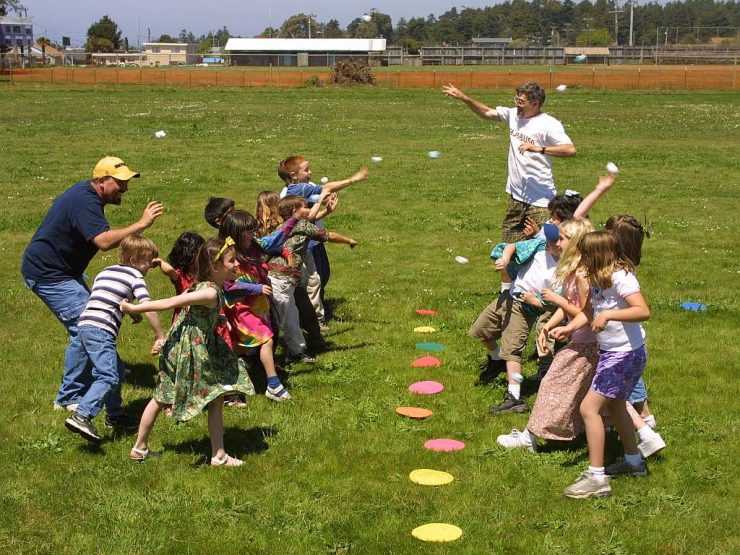 For example, clap for a dull sound, stomp for a voiced sound, etc.
For example, clap for a dull sound, stomp for a voiced sound, etc.
25. “A lot of words”
Props : scene pictures (for example, a forest landscape, a farm, a city, etc.).
The facilitator shows the child a picture and offers to find as many objects on it as possible for a given letter or think of what objects and animals can be here.
First, children name objects that begin with a given letter, then words where the indicated letter is in the middle of the word, and at the end they need to come up with words with a hidden letter at the end.
The third stage of the game is that the facilitator removes the picture and asks the child to repeat as many of the named words from memory as possible.
Attention games
Attention games are necessarily present in the pedagogical activity of both kindergarten teachers and teachers in primary and secondary schools. And all because it is the ability to concentrate that helps the child to understand a huge amount of information, to analyze the world around him.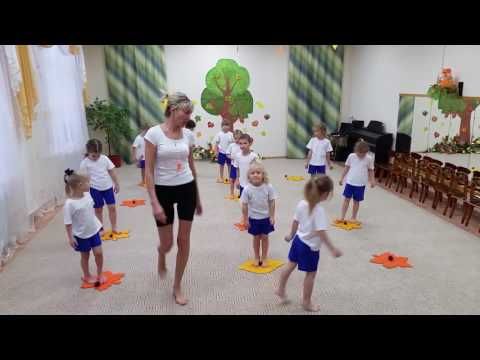
26. “Keep all the letters”
Props : pre-prepared cards with fictitious words, notebook, pen.
Copying from a sample is a good exercise in developing attention. So, the child receives one card with made-up words written on it. There are several card options:
- Card 1: SLASELLA DASSEKE SELASSA.
- Card 2: CORRIX KUSURA ICOSSIR.
- Card 3: PREMARAP STASSIT RAMMETAT.
- Card 4: RAKISSUMAKIRU KAMMUKAR.
- Card 5: PERILLIMENAT KOSIKUMARANN.
- Card 6: RAPETON NEED PELACUSSI.
The child needs to rewrite the words exactly without losing a single letter.
The second version of the game is that the child is given two or three cards. The host reads out a fairy tale in which these words appear, but not all, but only some. In addition, the fairy tale may contain fictitious words that are not on the cards. The task of the child is to cross it out every time a word is heard from the card.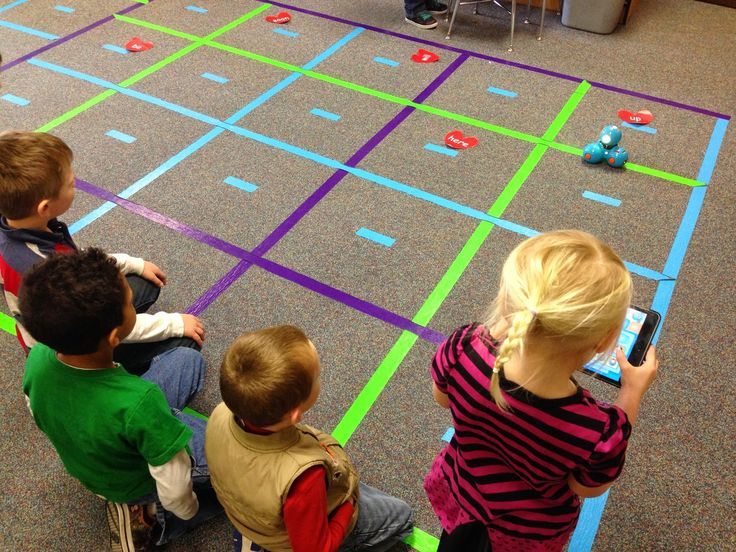 At the end, the facilitator and the child check whether all the named words have been crossed out.
At the end, the facilitator and the child check whether all the named words have been crossed out.
Example with cards 1 and 2:
In a distant kingdom there lived a princess named SLASELLA. She was an unearthly beauty girl, smart, benevolent, ready to give everyone her radiant smile. Once her father, King PREMARP, wanted to marry the girl, but who will be awarded such a diamond, how to find a worthy groom? Then the king came up with an idea and said - whoever defeats the evil monster KUSURU, who lives in the dark forest, will marry the princess. Many guys wanted to marry a beautiful princess, but everyone was afraid of a terrible forest monster. For three days PREMARAP waited for the suitors, but no one came. And on the fourth day he heard the sound of hooves outside the window.
- It's me, the glorious knight DASSEKE! And this is my war horse IKOSSIR! shouted a handsome young man in iron armor. - And this is the head of KUSURA, for which the princess was promised!
Check : The words SELASSA and CORRIX must remain uncrossed out on the cards.
27. Spot the Differences
Requisites : picture cards to find differences.
There are many varieties of this game, but they have the same essence - the child is shown two pictures that at first glance seem to be the same. However, they do have some differences. The child needs to find and mark the missing details.
The cards may not contain pictures, but symbols and geometric shapes, words and numbers are written.
28. “What has changed”
Props : toy, various accessories.
The child is asked to carefully examine the toy, after which he is asked to close his eyes or turn away. The host changes something in the toy (puts on a hat or ties a scarf on it, clings to a badge or hairpin, changes the position of the limbs, etc.). The child must say what has changed.
Role play
Story games are extremely important for the formation of a preschooler's personality.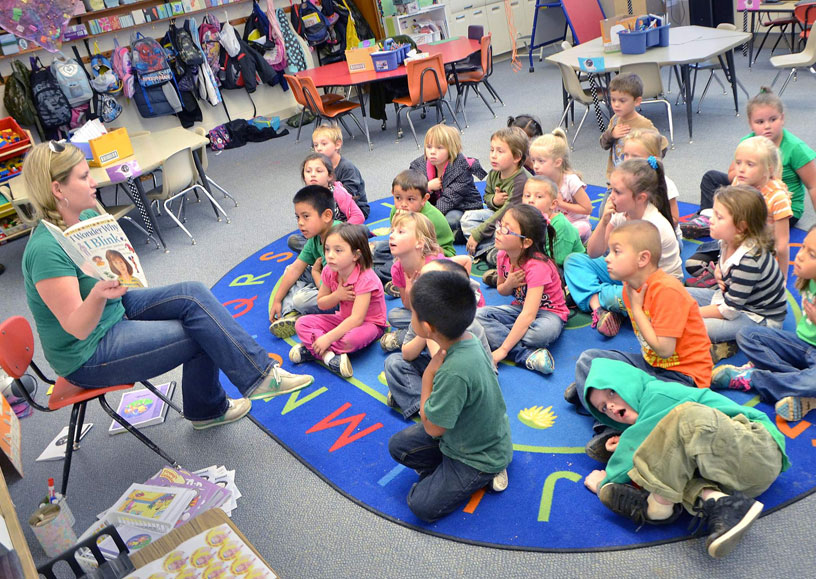 During role-playing games, the child expands knowledge about the professional activities of adults, interpersonal relationships in society, learns to communicate, resolve conflict situations, evaluate certain actions. Theatrical games are very popular with children of primary school age. Let the child choose what to play: daughters-mothers, kindergarten, shop or hospital.
During role-playing games, the child expands knowledge about the professional activities of adults, interpersonal relationships in society, learns to communicate, resolve conflict situations, evaluate certain actions. Theatrical games are very popular with children of primary school age. Let the child choose what to play: daughters-mothers, kindergarten, shop or hospital.
29. “Hiking”
Props : backpack, blanket, tent, flashlight and other hiking attributes.
Invite your child to go on a real hike. You can play both on the street (in the park and even on the playground), and in the apartment. This game will perfectly show and tell the child how to navigate in the forest, kindle a fire, cook food on a fire and other camping tricks. During the game, you can also teach the child chants and chants.
Here are some of the chants that children like:
– Who walks with a backpack?
- We are tourists!
Who doesn't know boredom?
- We are tourists!
- Roads lead us forward!
Our motto: - Always forward!
- Hey, guys, step harder! What does the tourist take on the road?
- A song, a spoon and a backpack!
- Who is behind?
- Don't fall behind!
- Who is tired?
- Do not be upset!
- Whoever wants to go with us - sing our song!
"On the beach"
On the be-re-gu
Bolshoy re-ki
bee-la uzha-li-la
Bear right in the nose,
Oh-ee-ee-ee!
The bear roared,
Sat on a bee
And he began to sing: .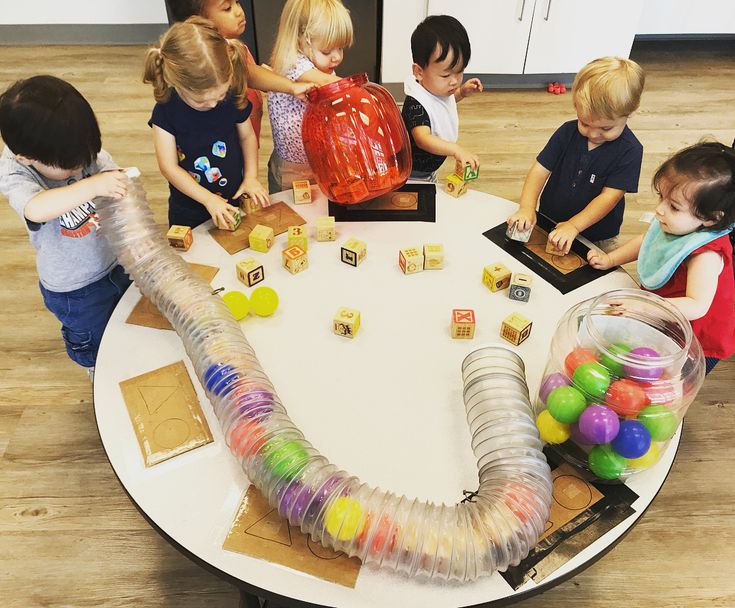 ..
..
Then you can sing a "repetition song":
I got bitten by a hippopotamus!
And out of fear, I climbed on a branch!
And I'm sitting here, and my feet are there!
I got bitten by a hippopotamus!
30. "Stroika"
Props : toys, "building materials" (Lego, magnetic constructors and other parts), construction vehicles (trucks, excavators, cranes).
At the beginning of the game, you need to decide which of the toys will be the foreman, who will be the customer, and who will be the builders. During the game, it is important not only to build a house/shop/tower or other structure, but also to create various conflict situations. For example, a lazy builder does not want to work and lets the whole team down, while others need to somehow persuade him to get down to business.
31. "Superhero"
Ask your child to choose an image of a superhero. It can be Batman, Spiderman or any other famous hero, but it will be much more interesting to come up with a superhero yourself.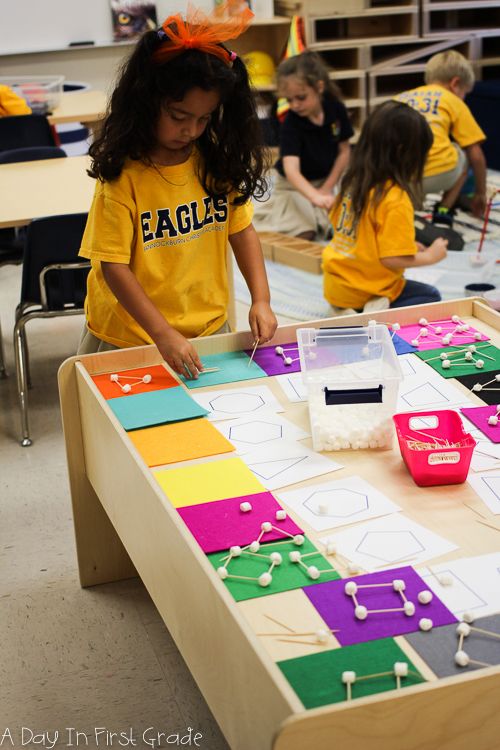 The host, parent, or other participant acts as the villain. The situation is simulated: for example, the villain wants to blow up the city, he has even hidden bombs in public places, but the superhero must stop him and save civilians.
The host, parent, or other participant acts as the villain. The situation is simulated: for example, the villain wants to blow up the city, he has even hidden bombs in public places, but the superhero must stop him and save civilians.
Outdoor games for children 6 years old
On the street, as a rule, children throw out their energy, run, jump, climb stairs. Children's games at 6 years old are active and fun. But the task of such games is not only to have fun and warm up, but also to develop endurance, dexterity and coordination of the child's movements.
- Children's outdoor play: 17 replacements for shooters, fighting games and arcades
32. Predators and herbivores
A predator is selected. A large circle is drawn. The predator catches herbivores in turn, the caught players are placed in a drawn circle. The player can only exit the circle if a free herbivore touches it. That is, the task of a predator is not only to catch all herbivores, but also not to let them close to the circle.